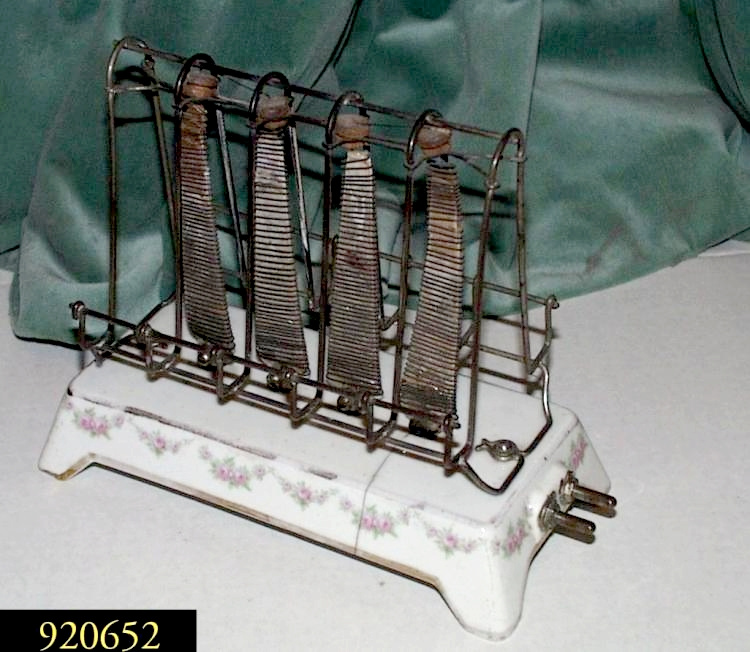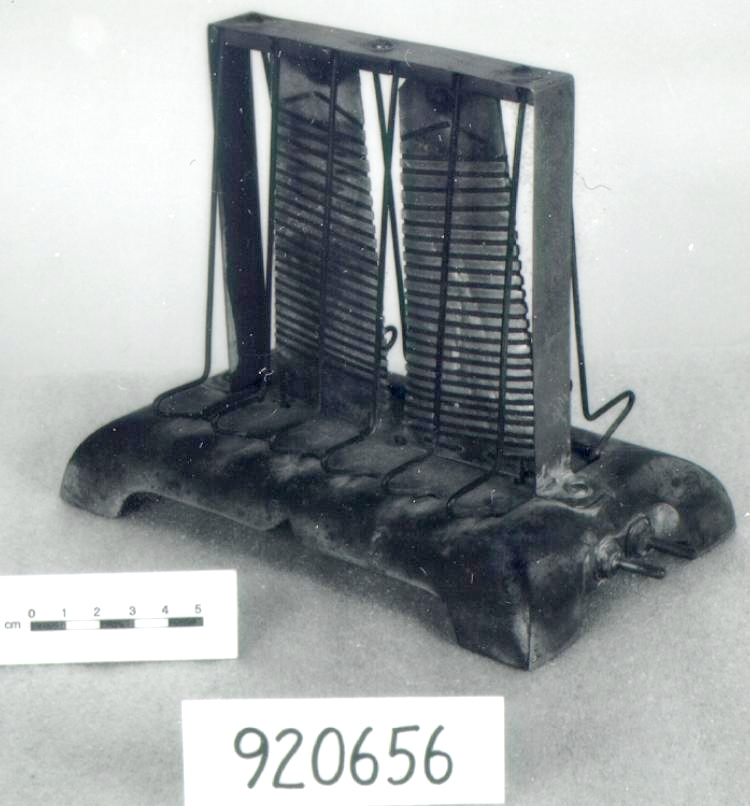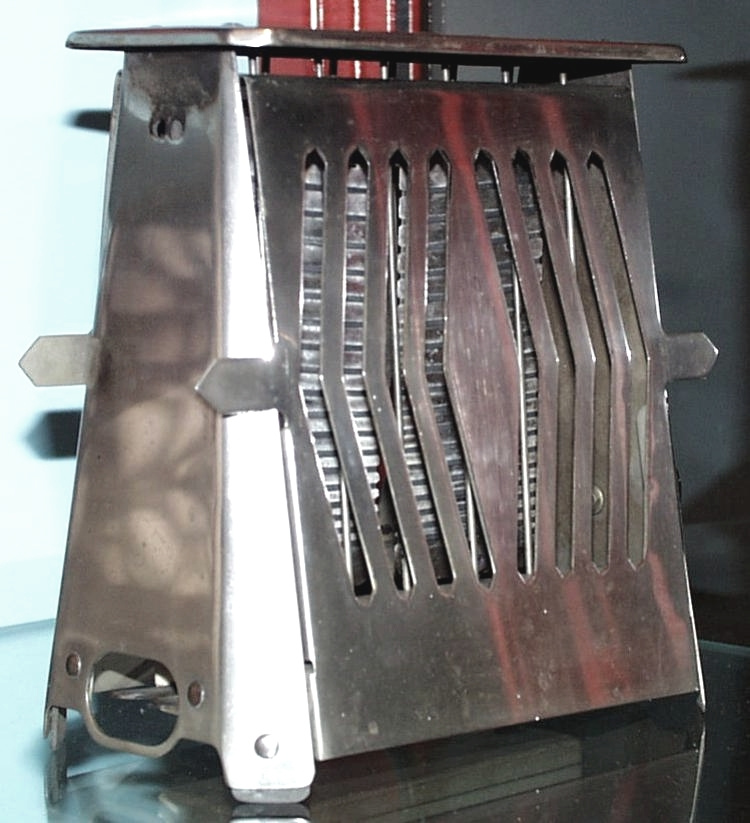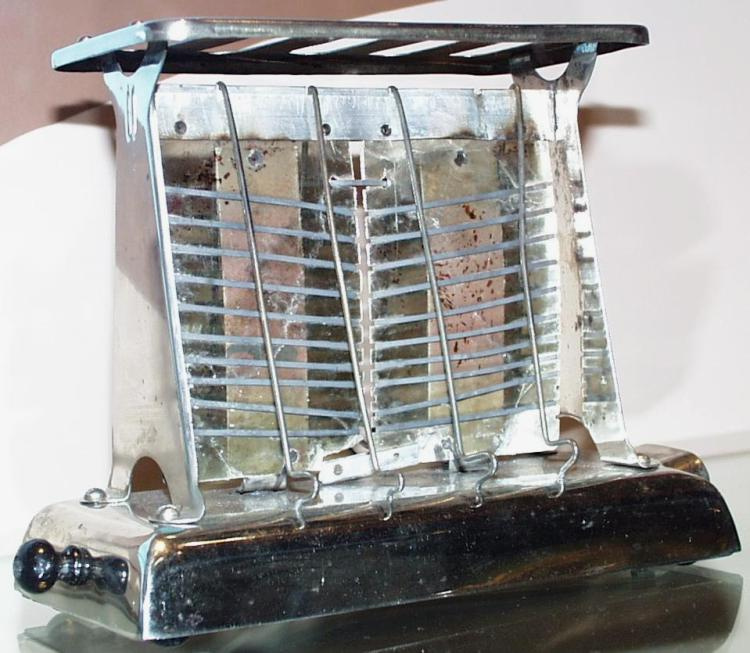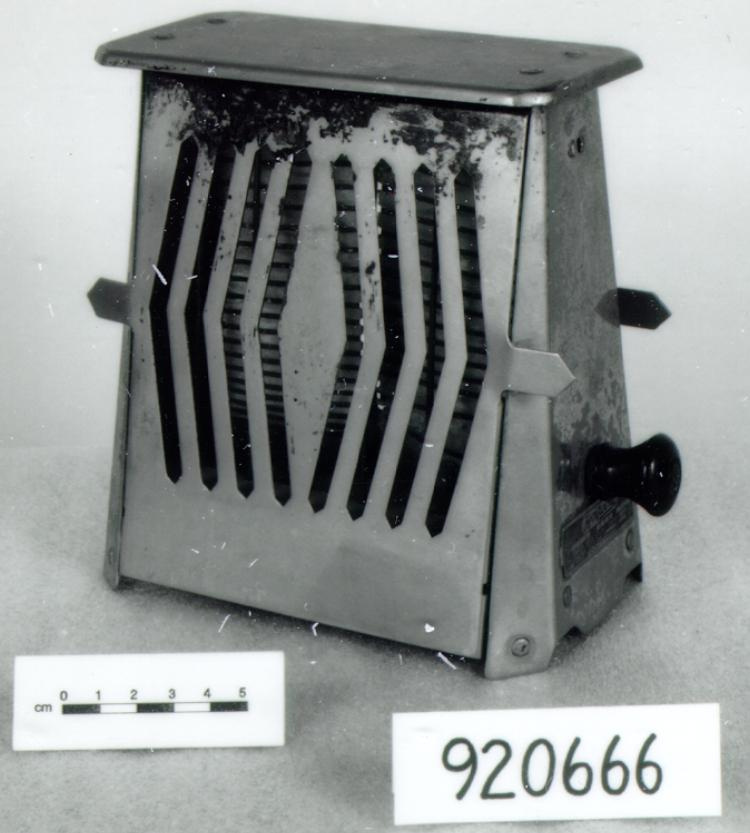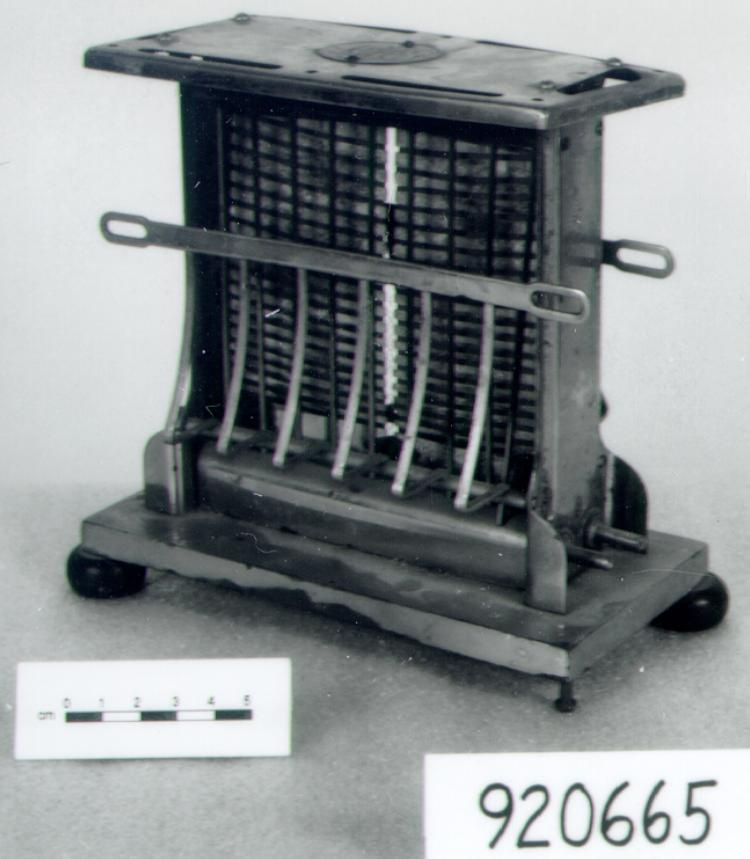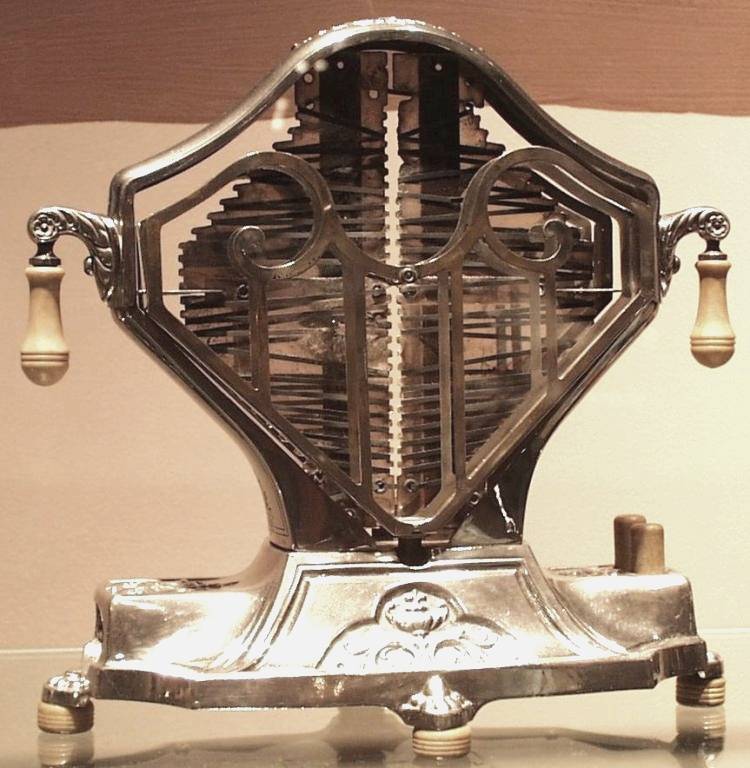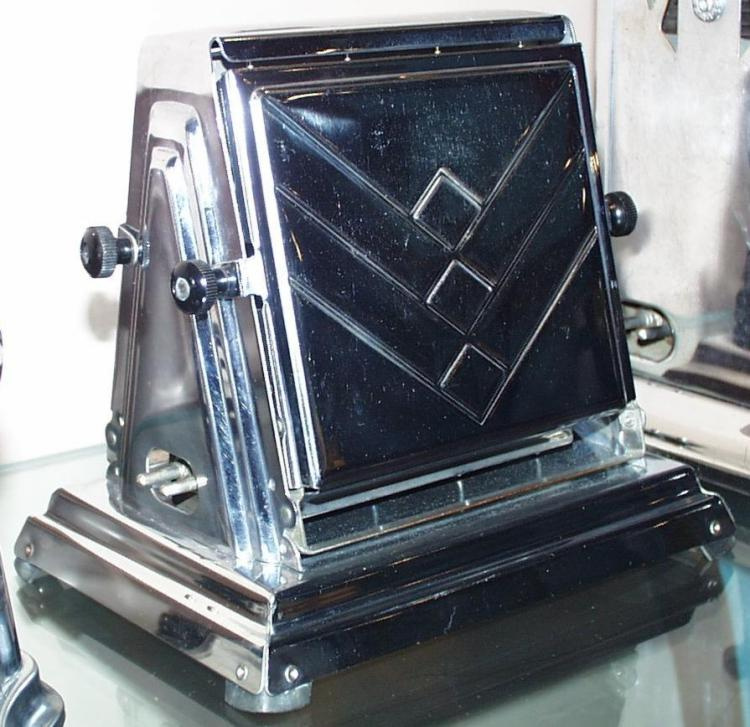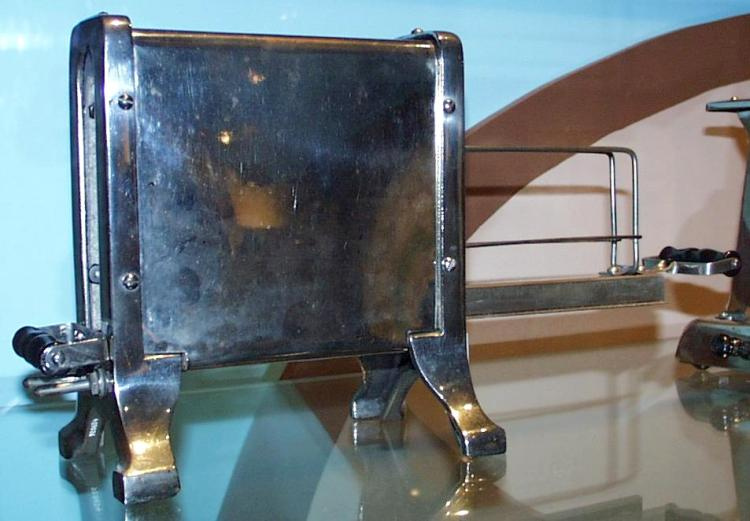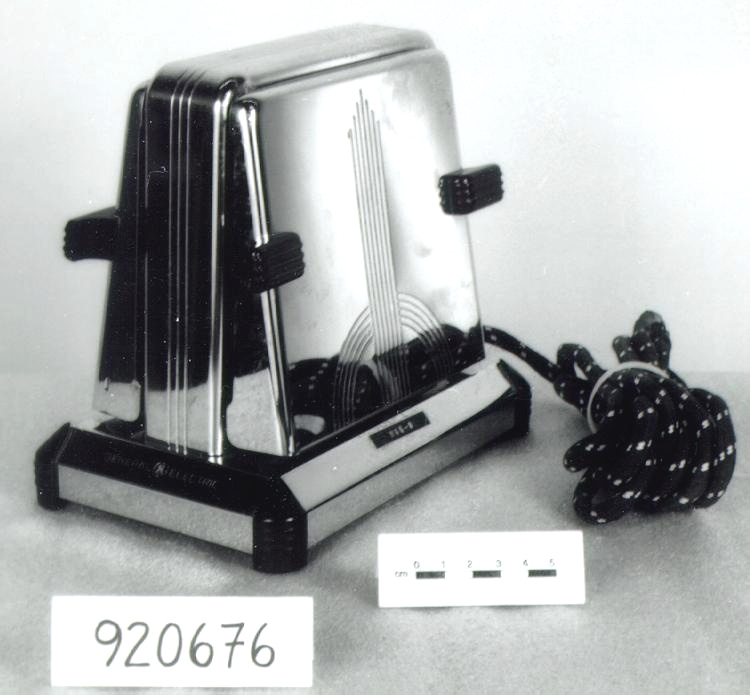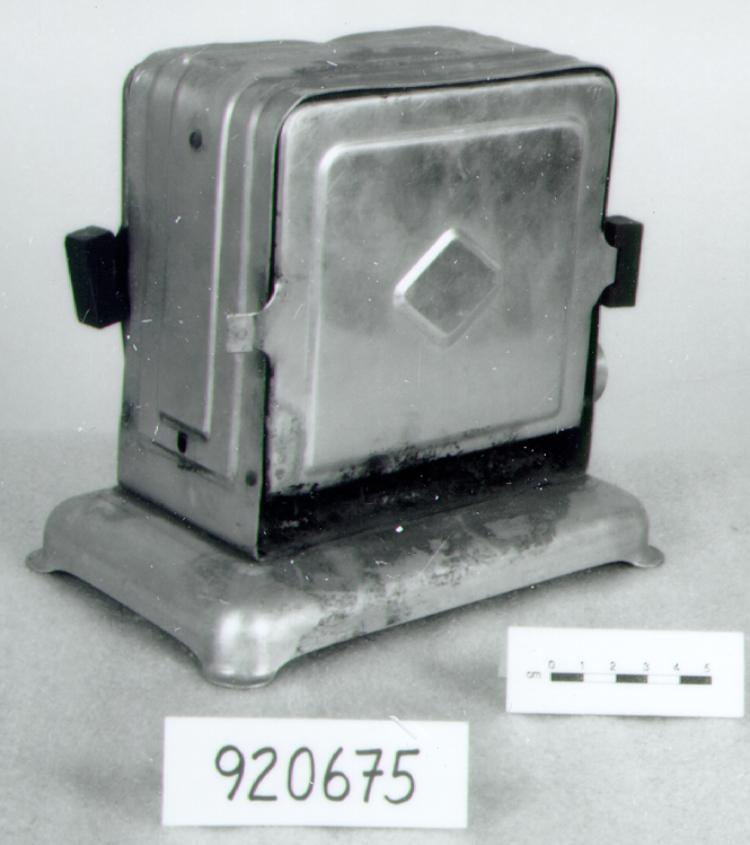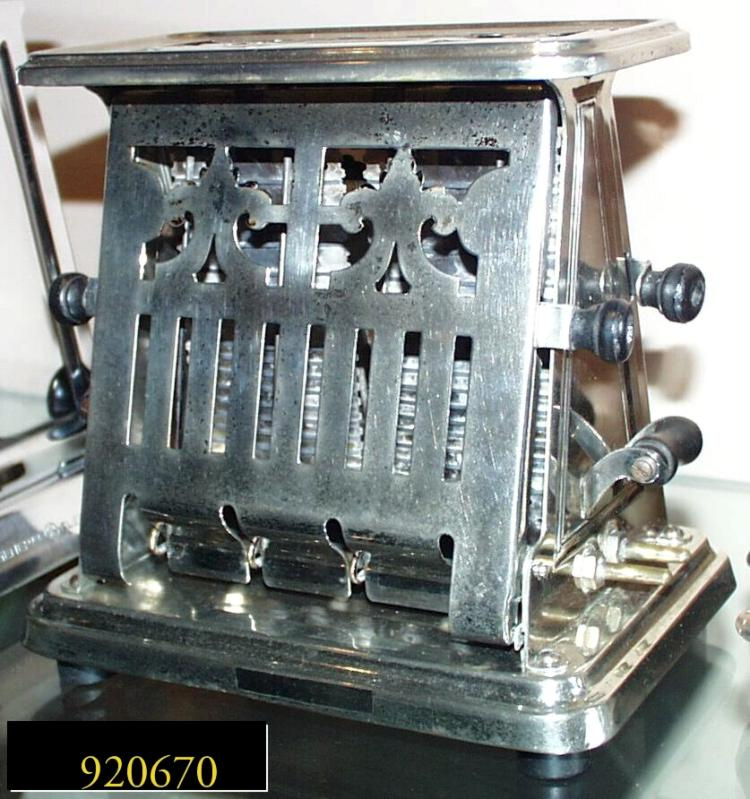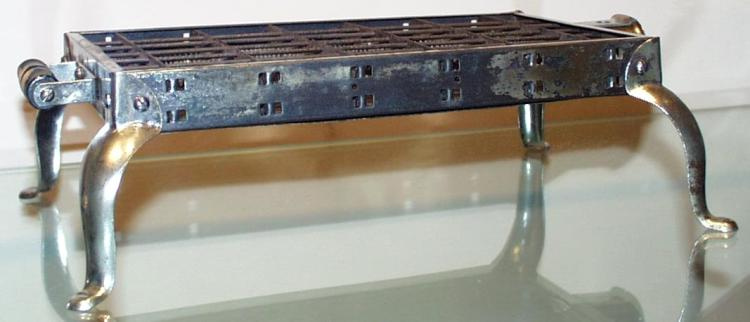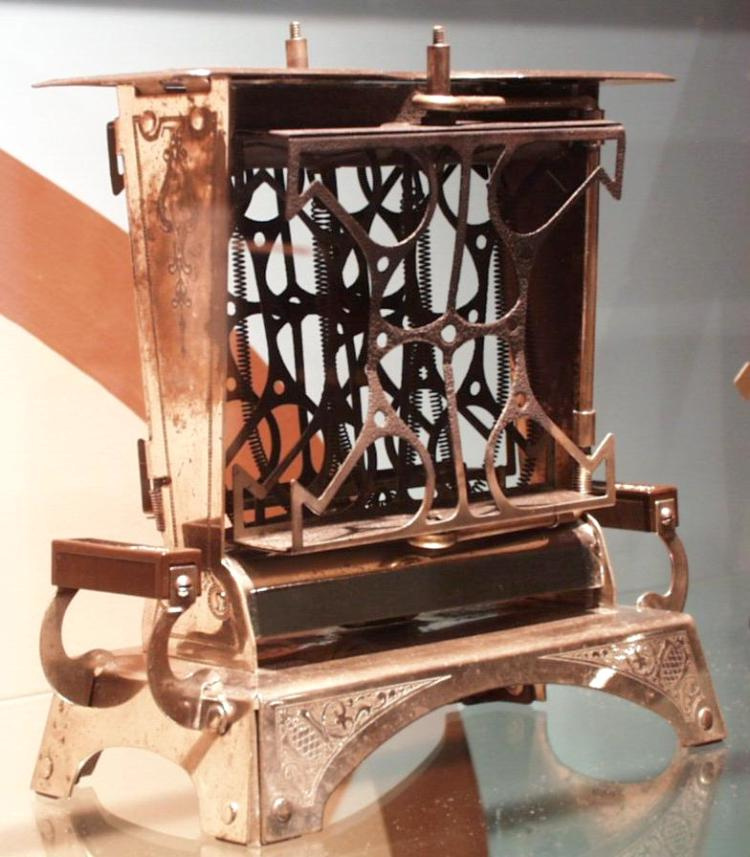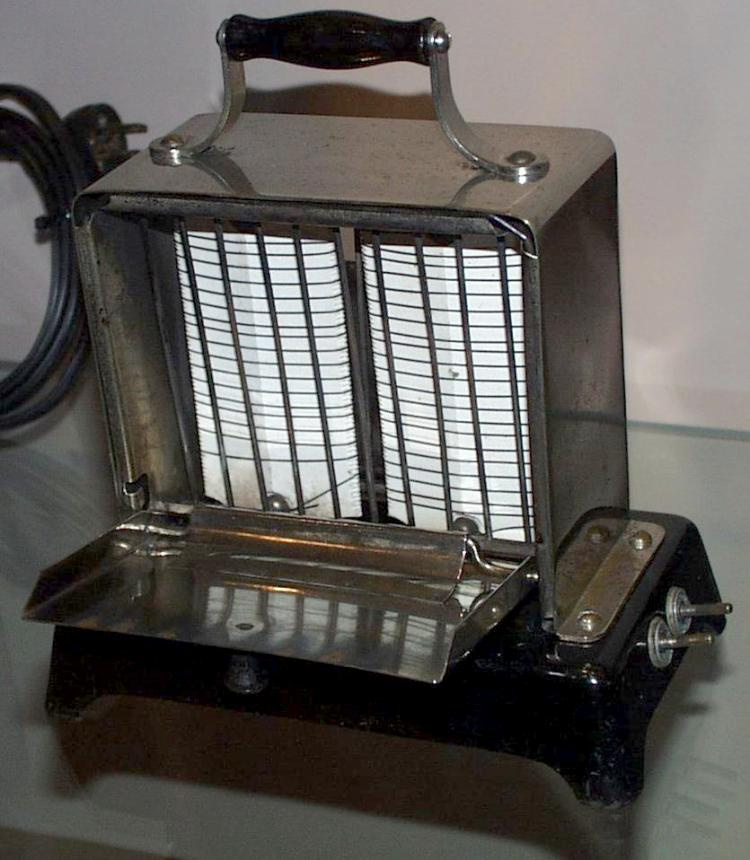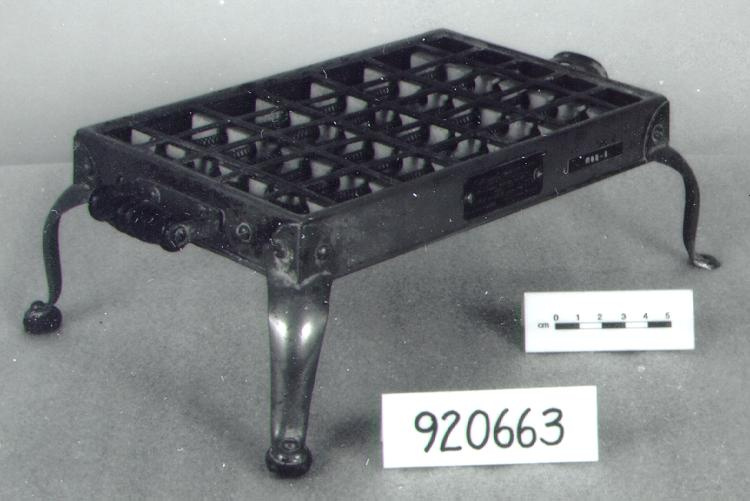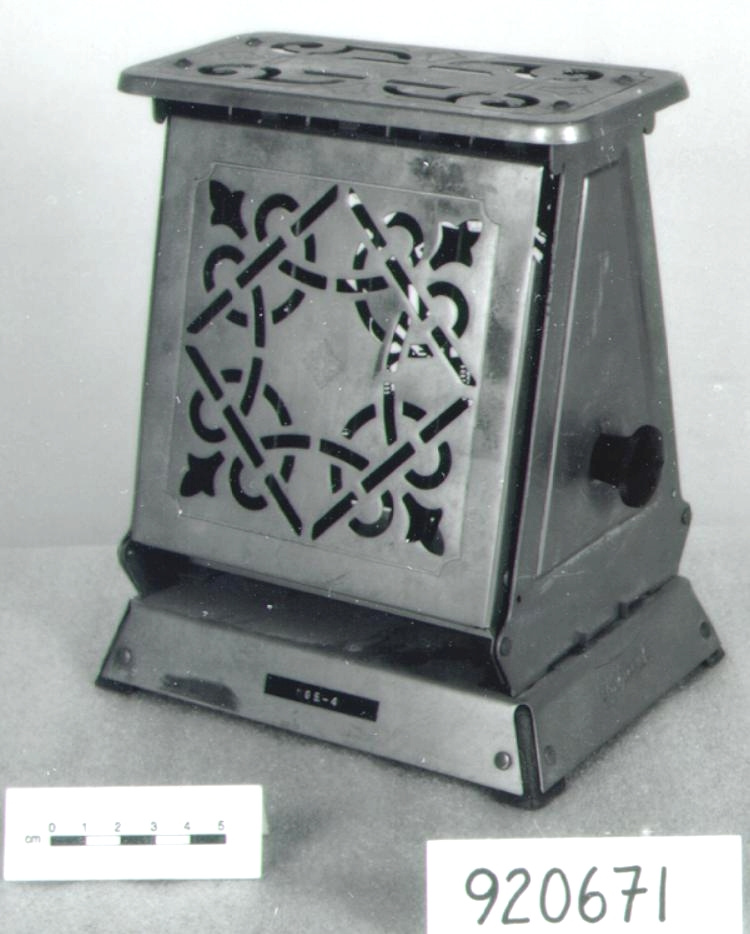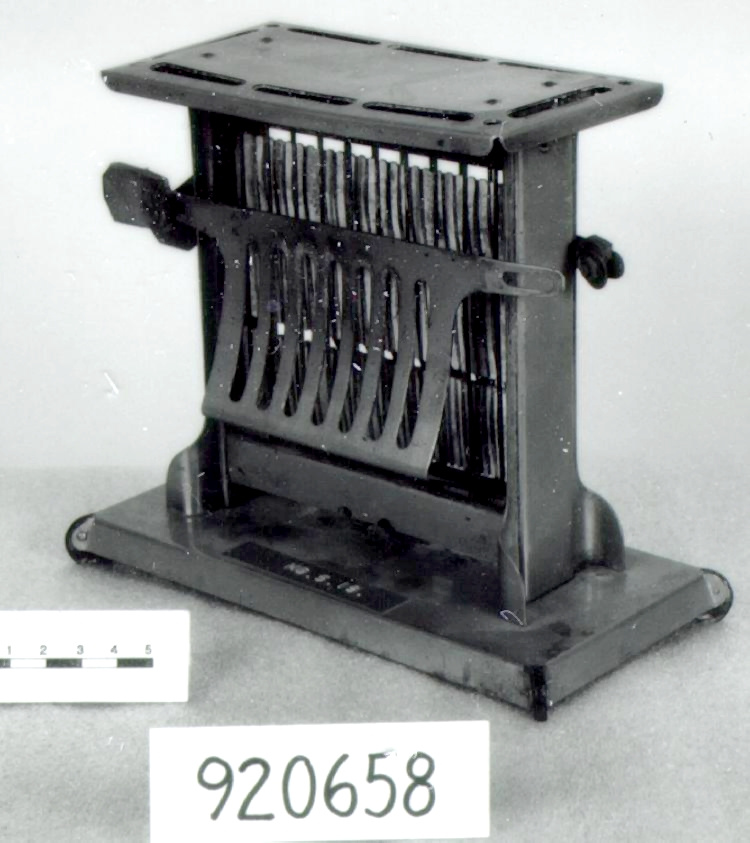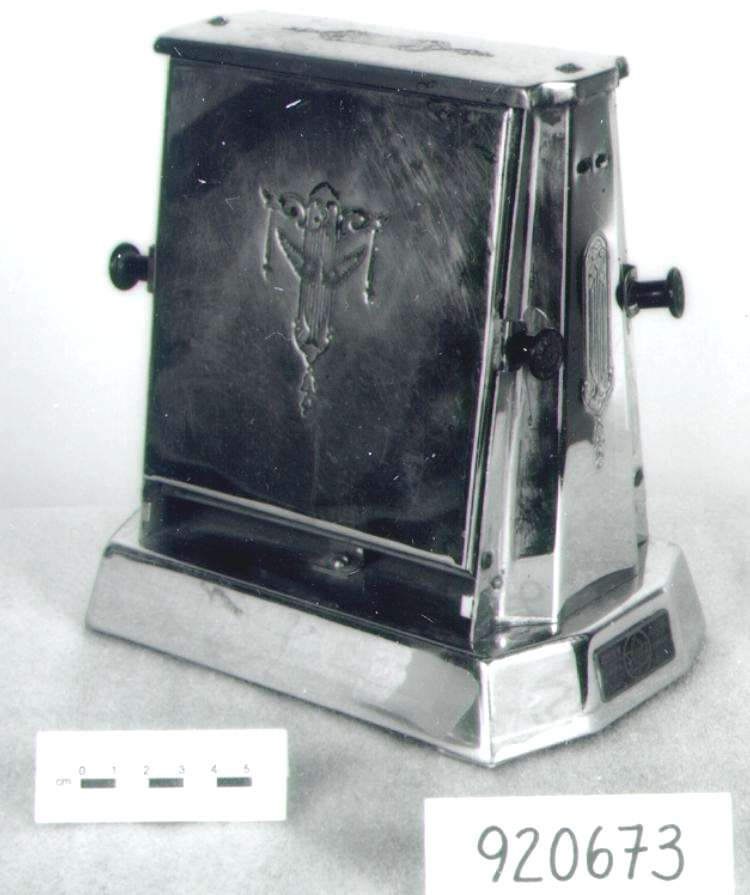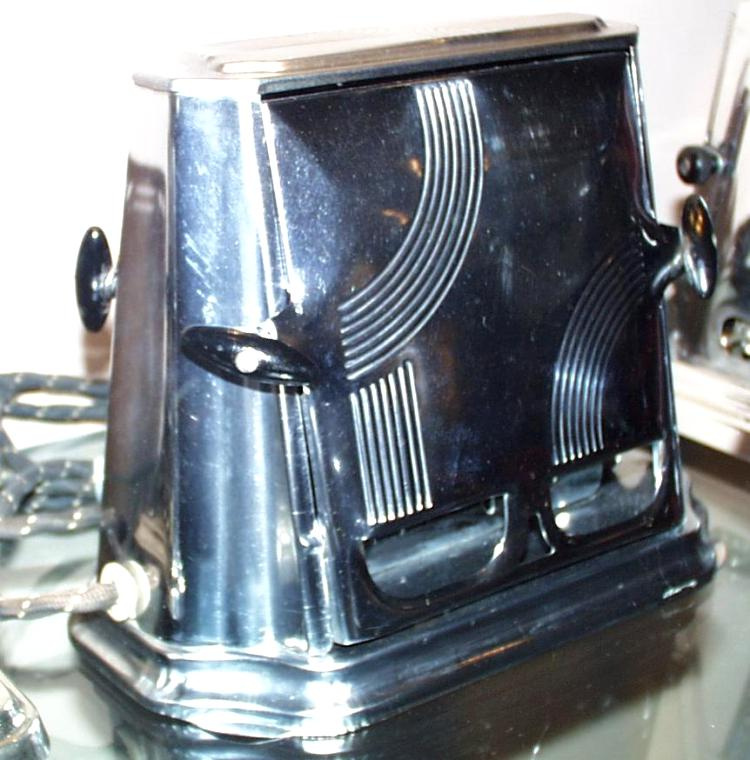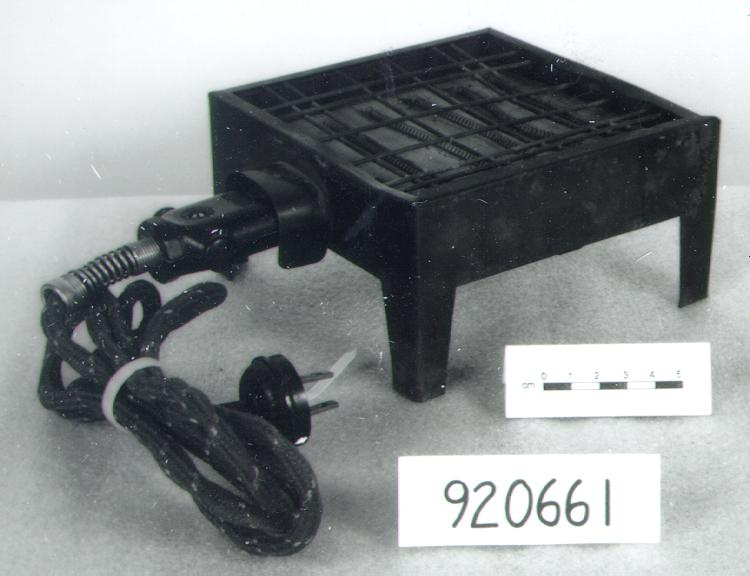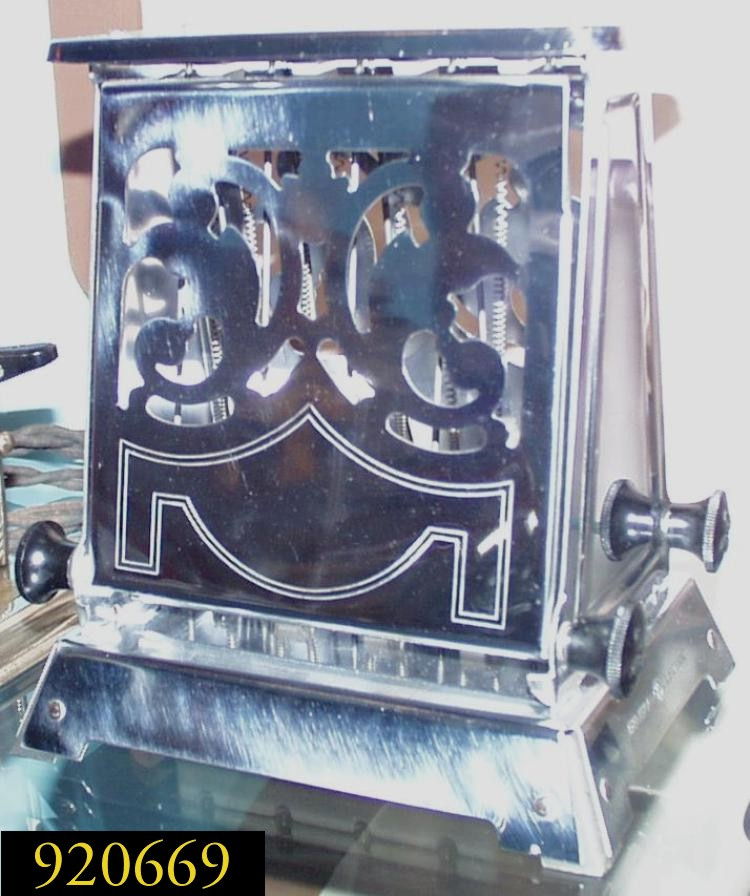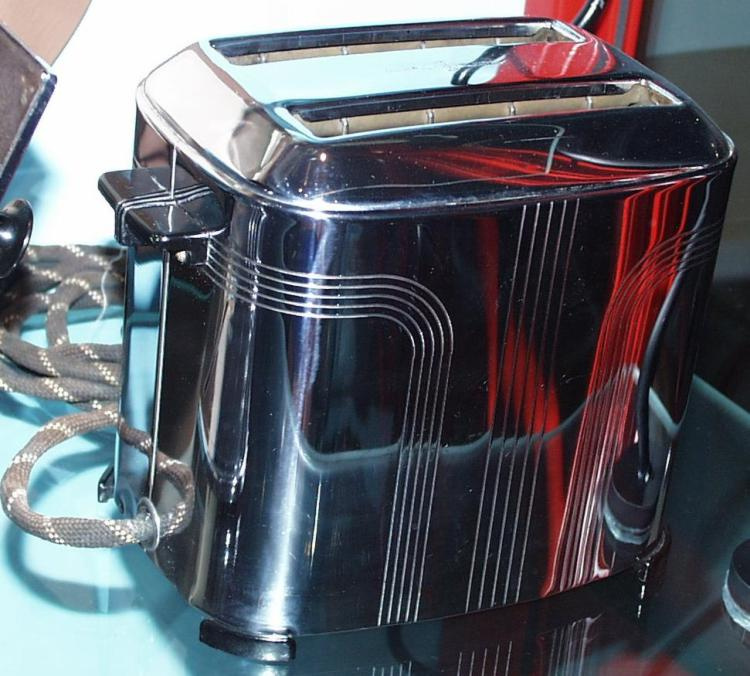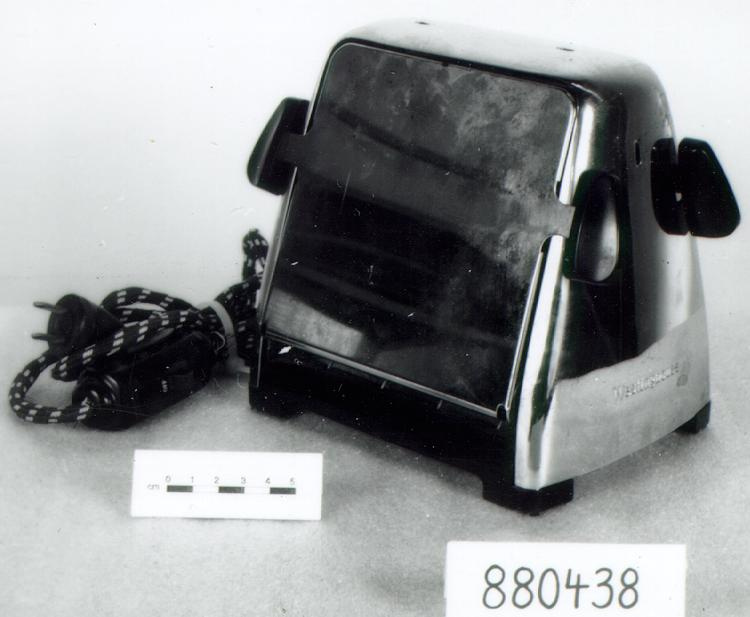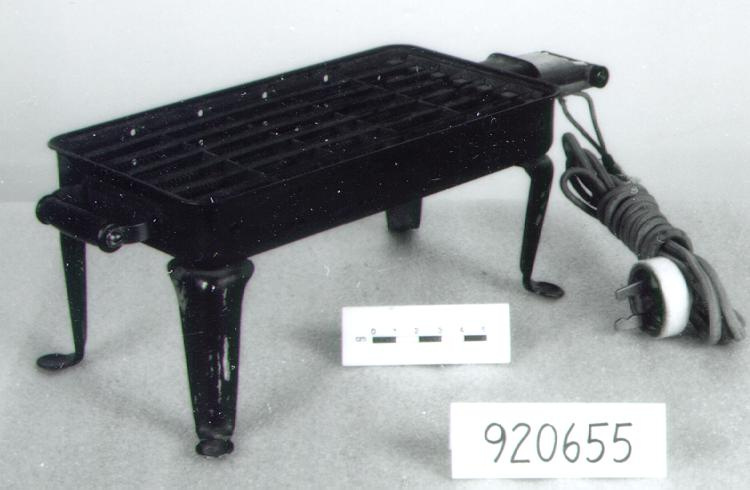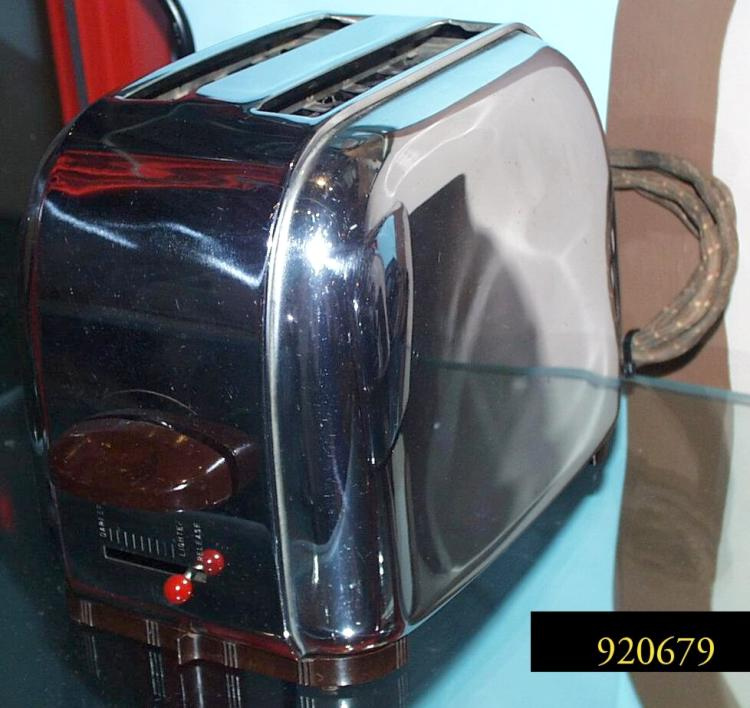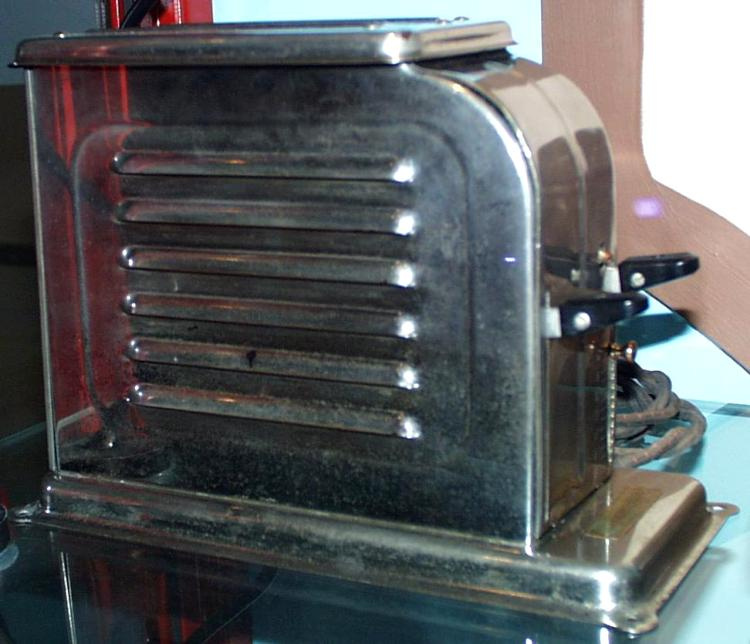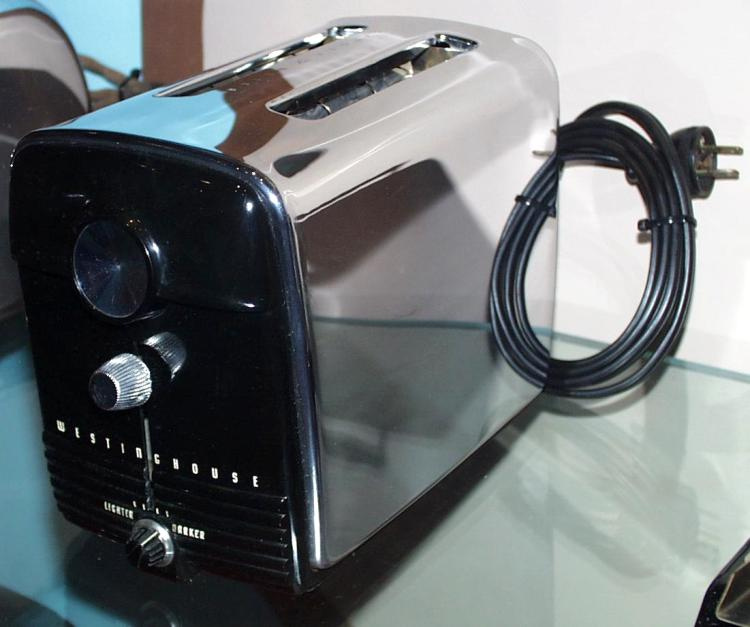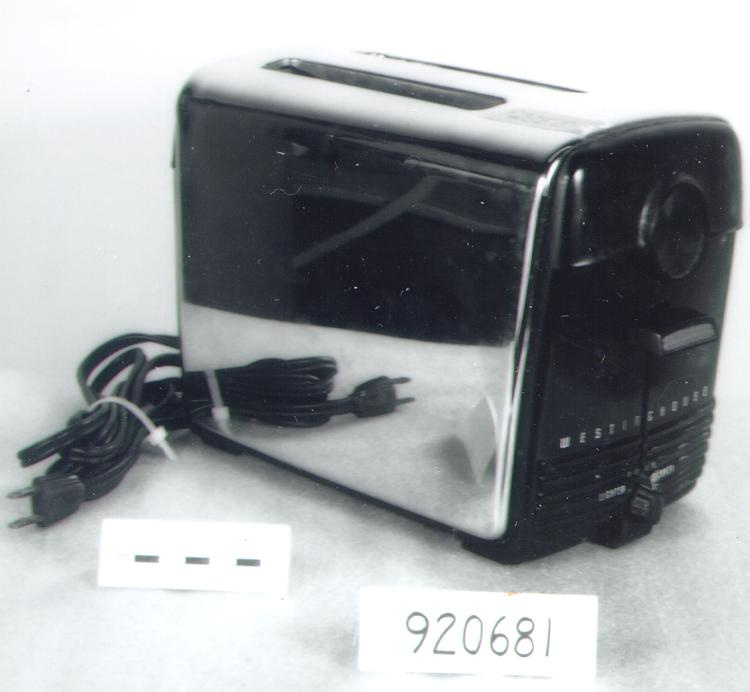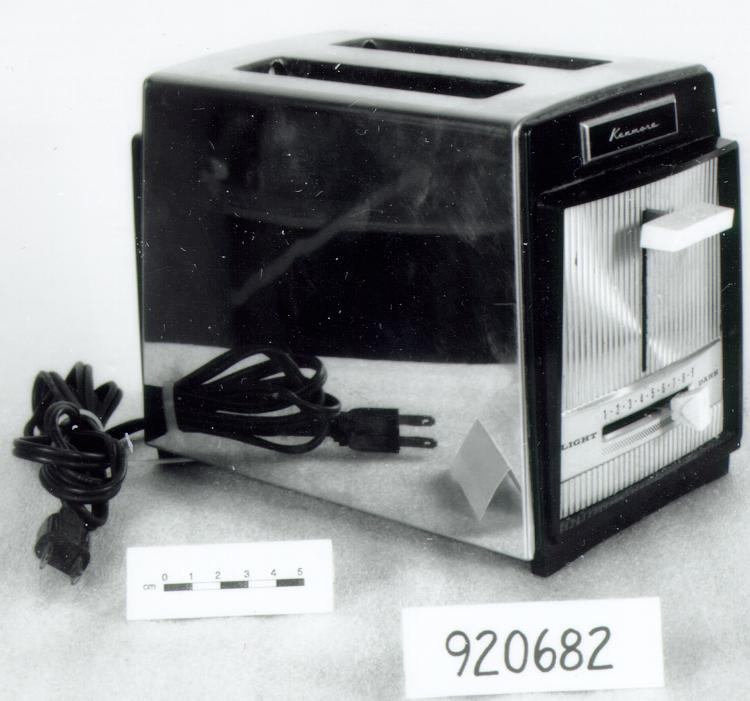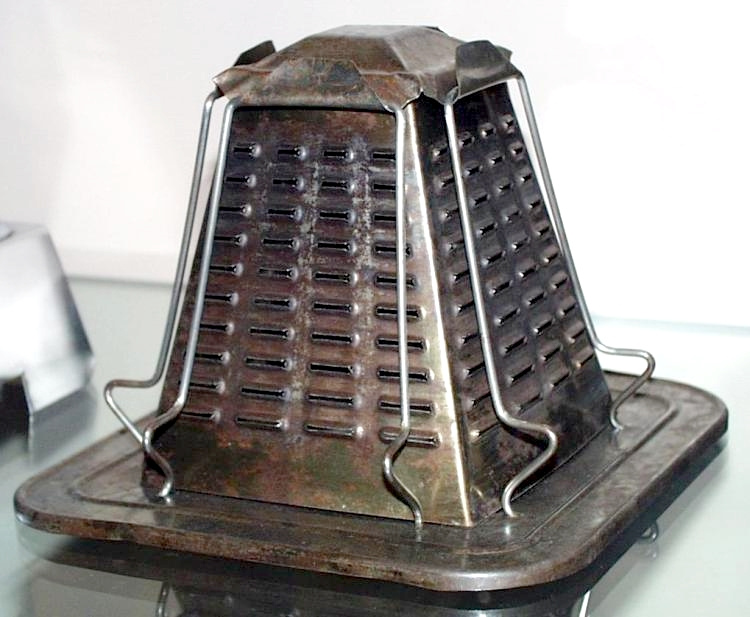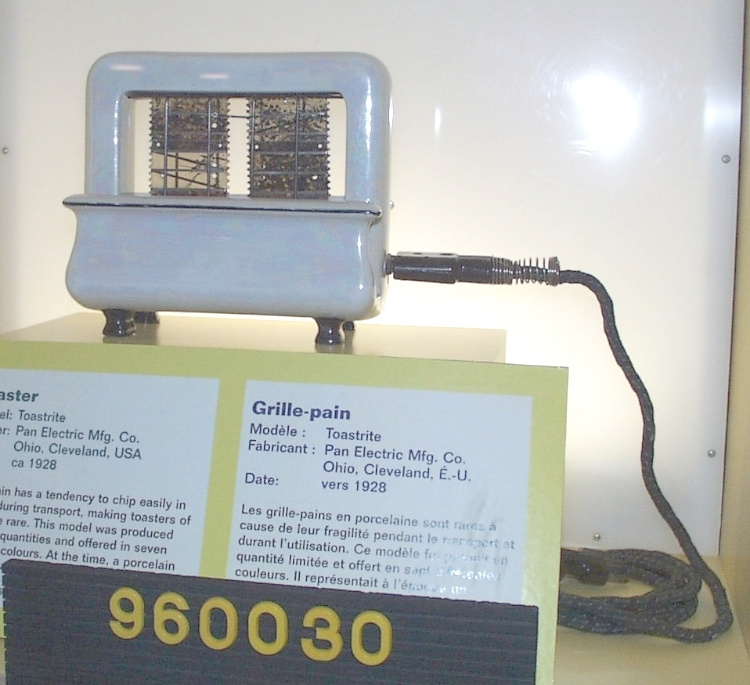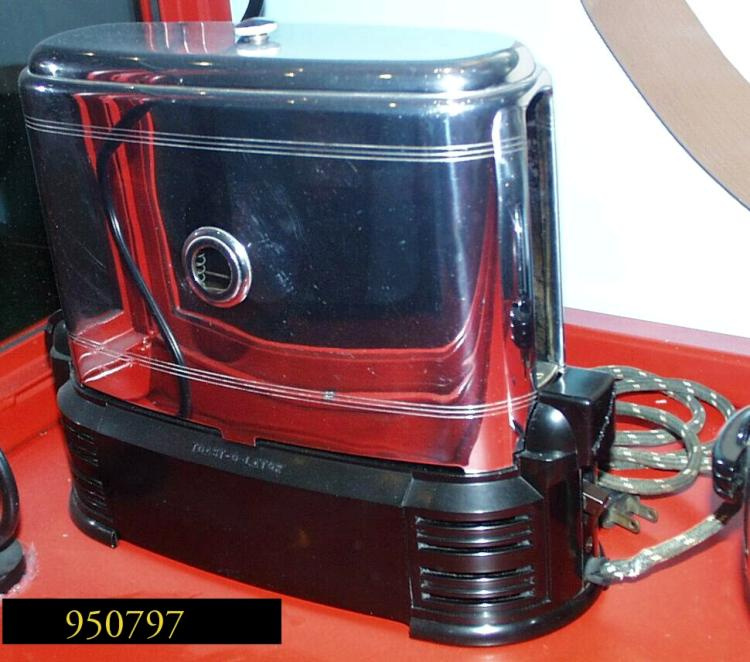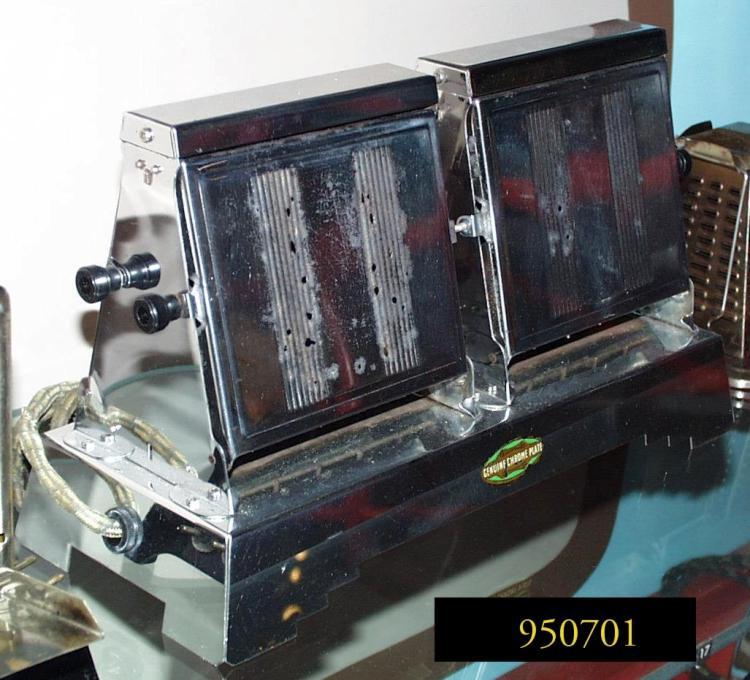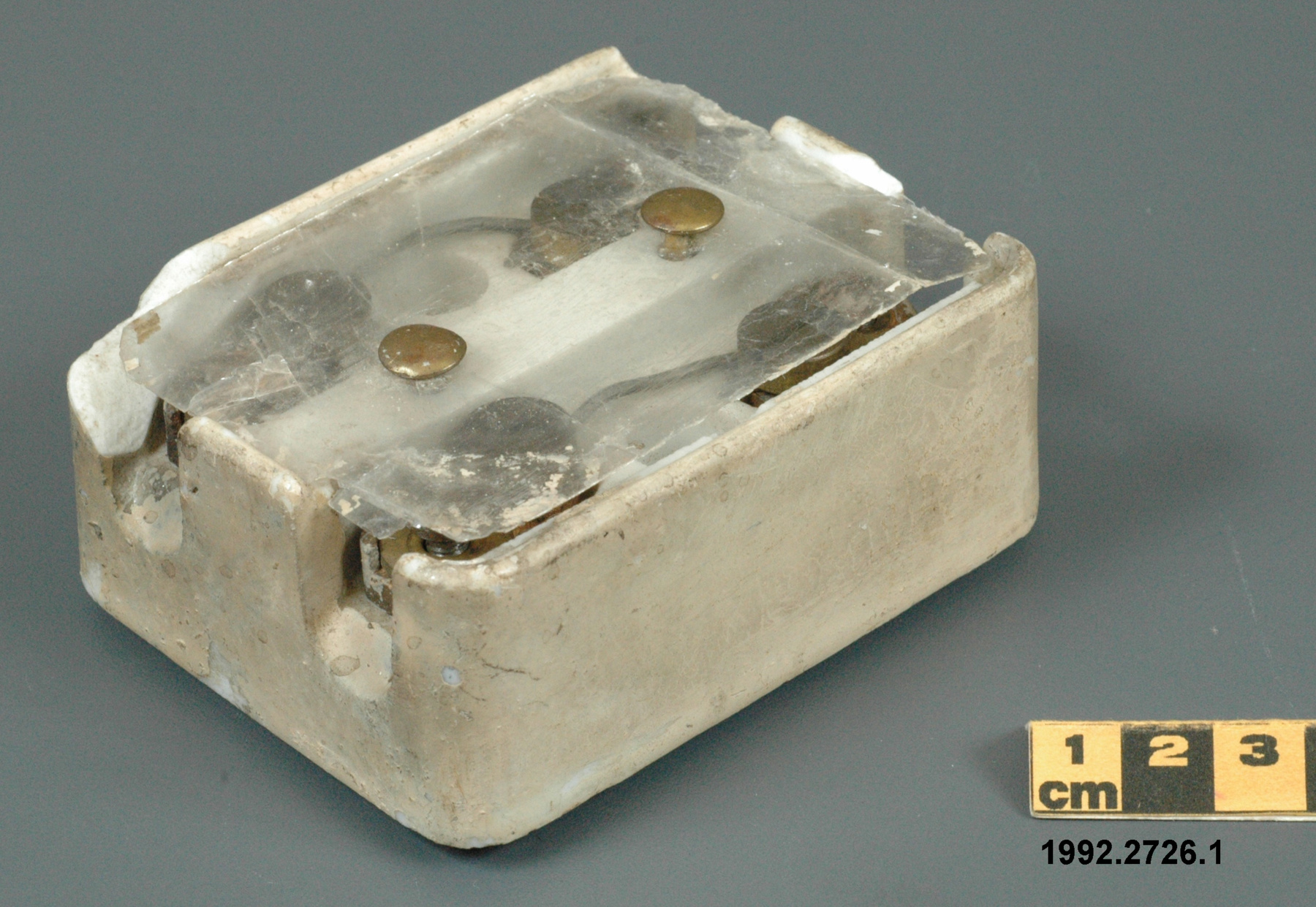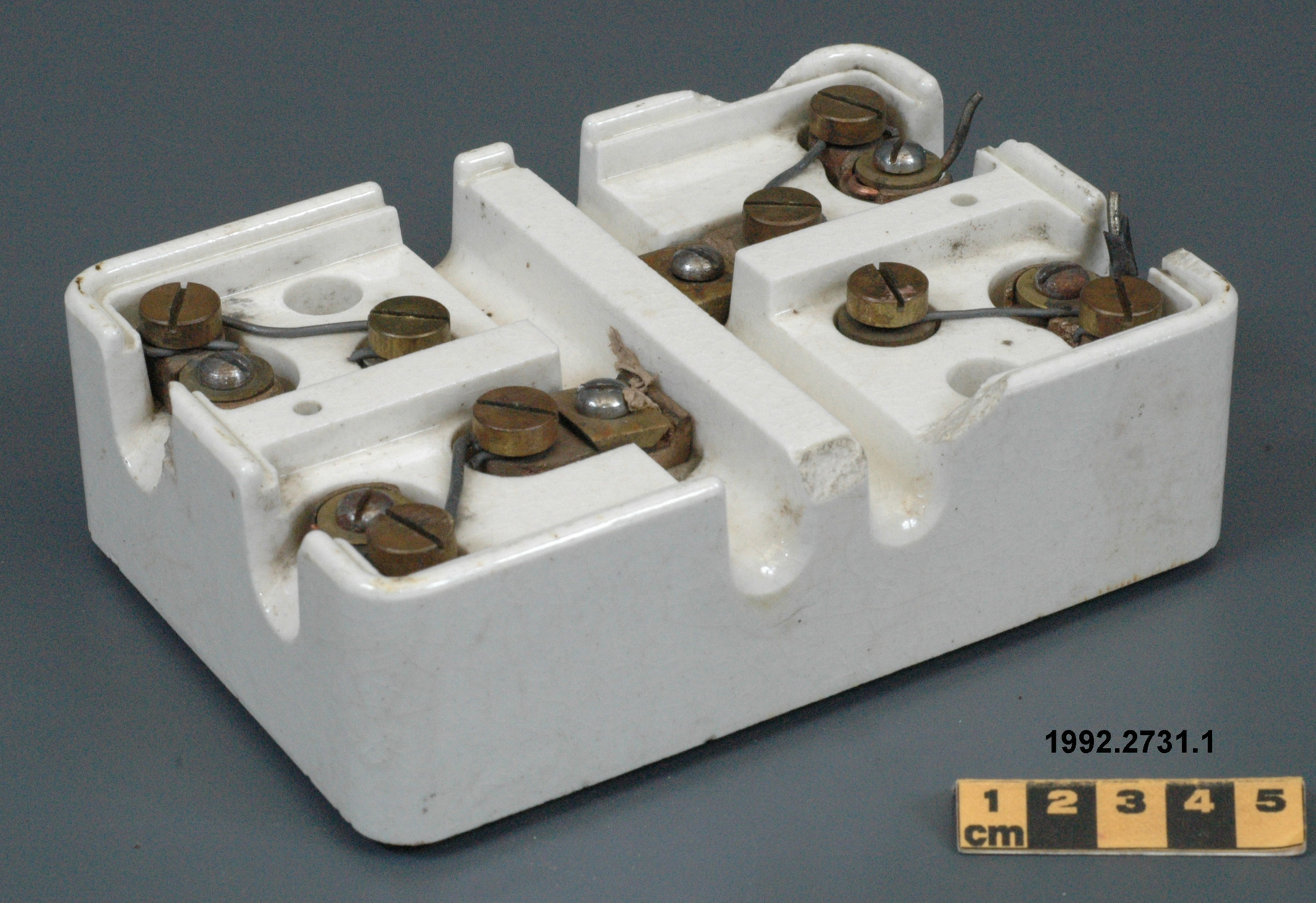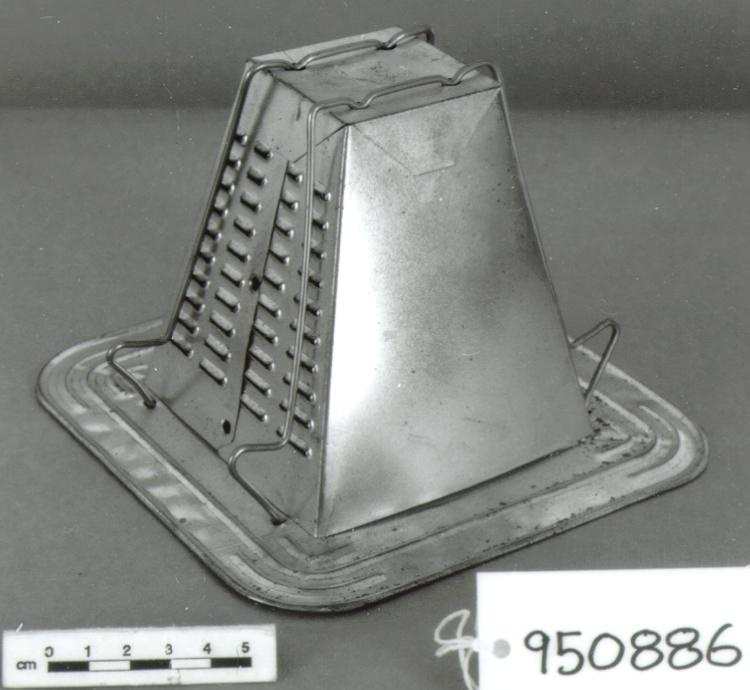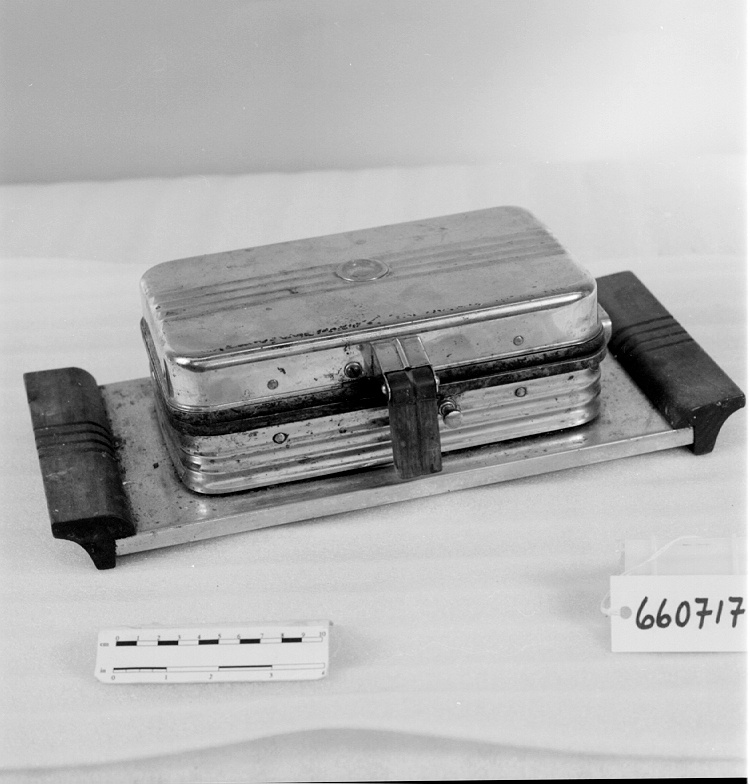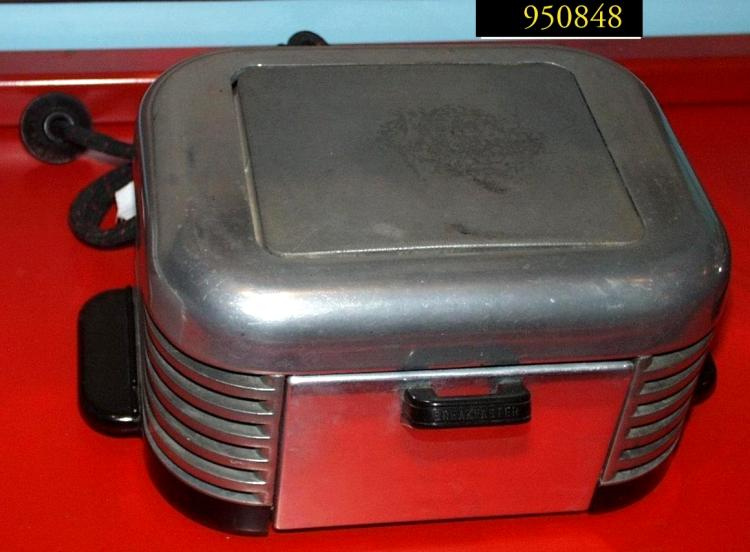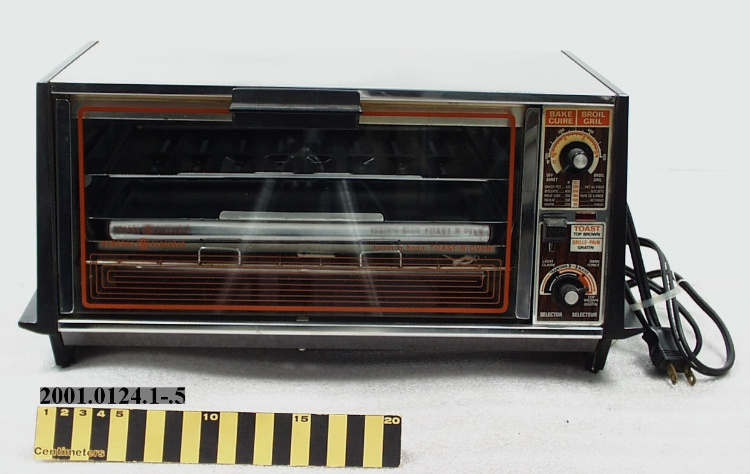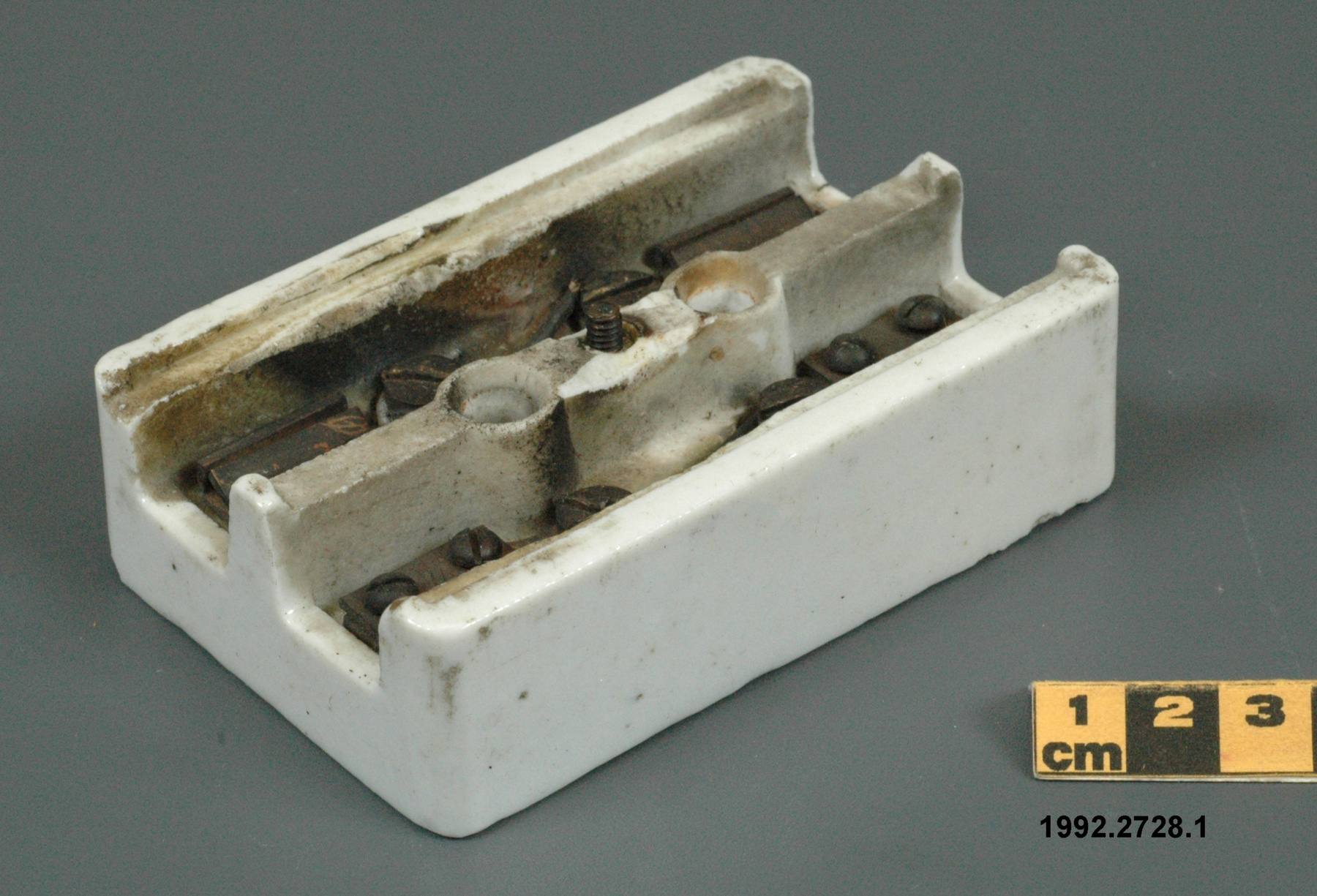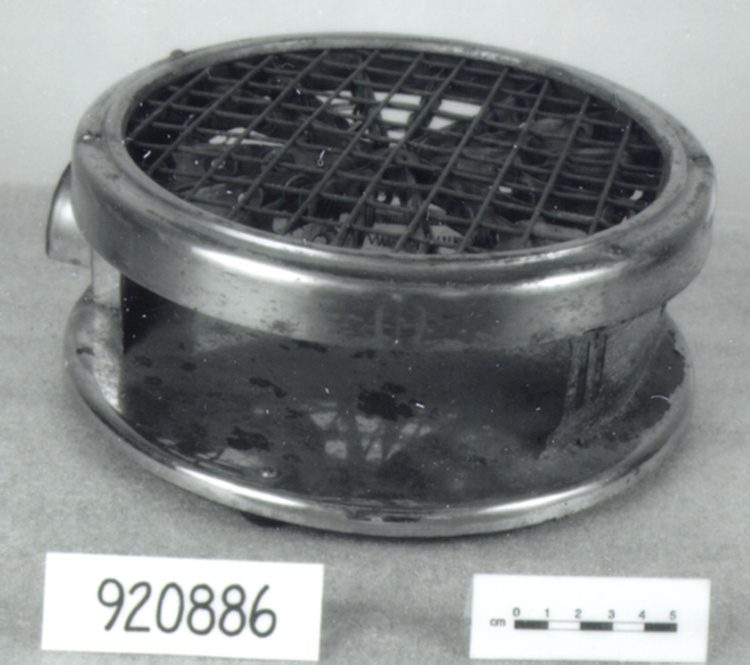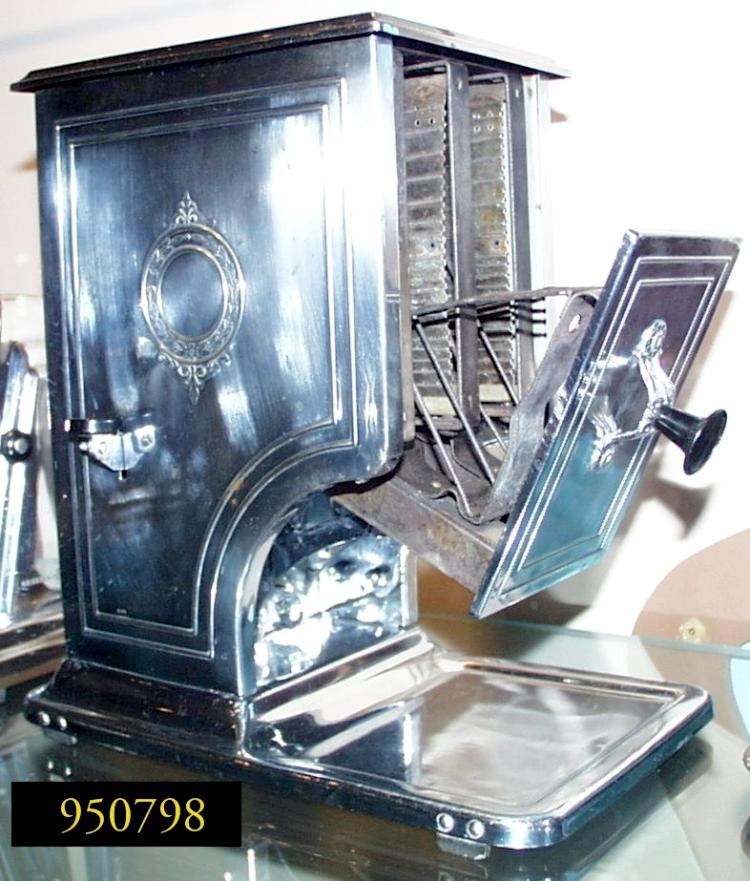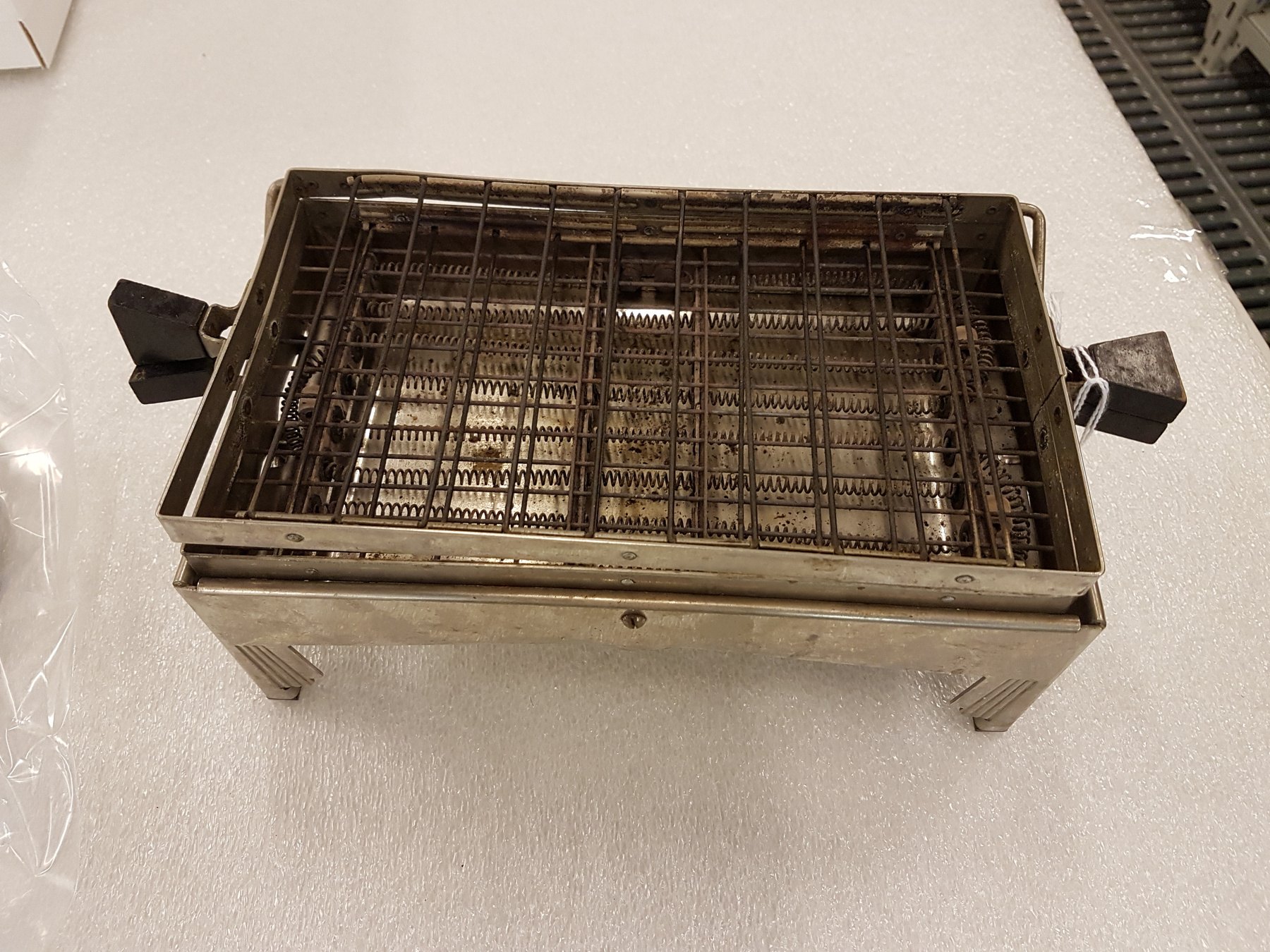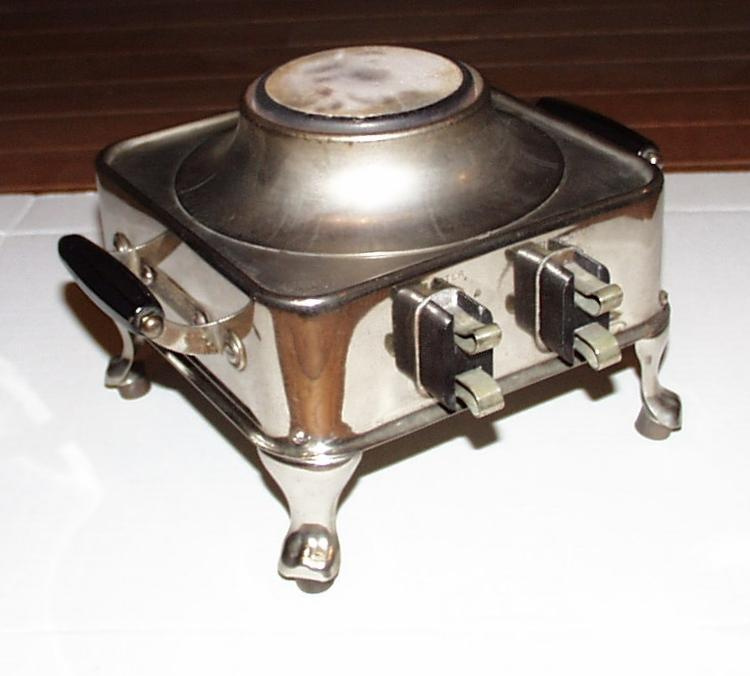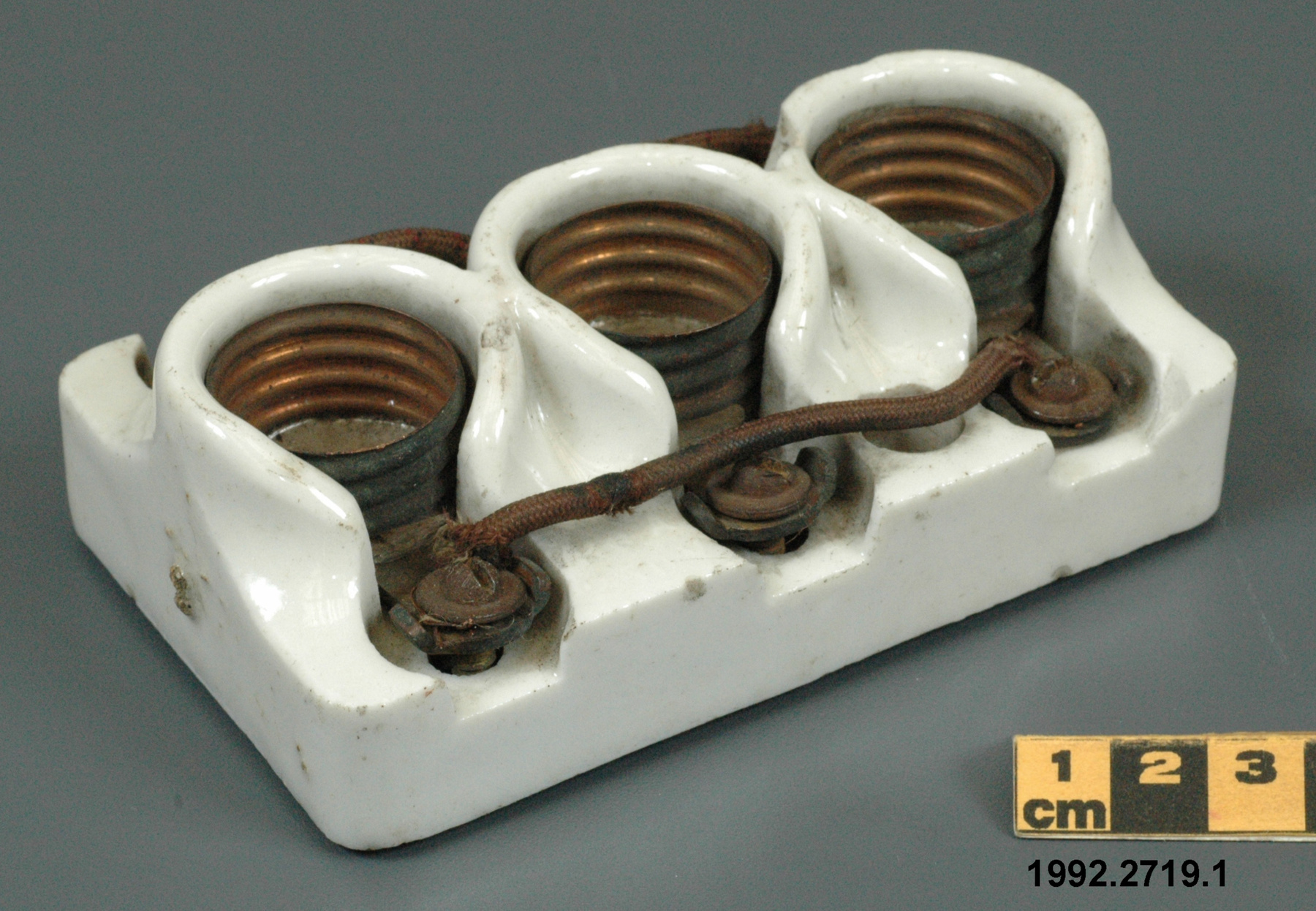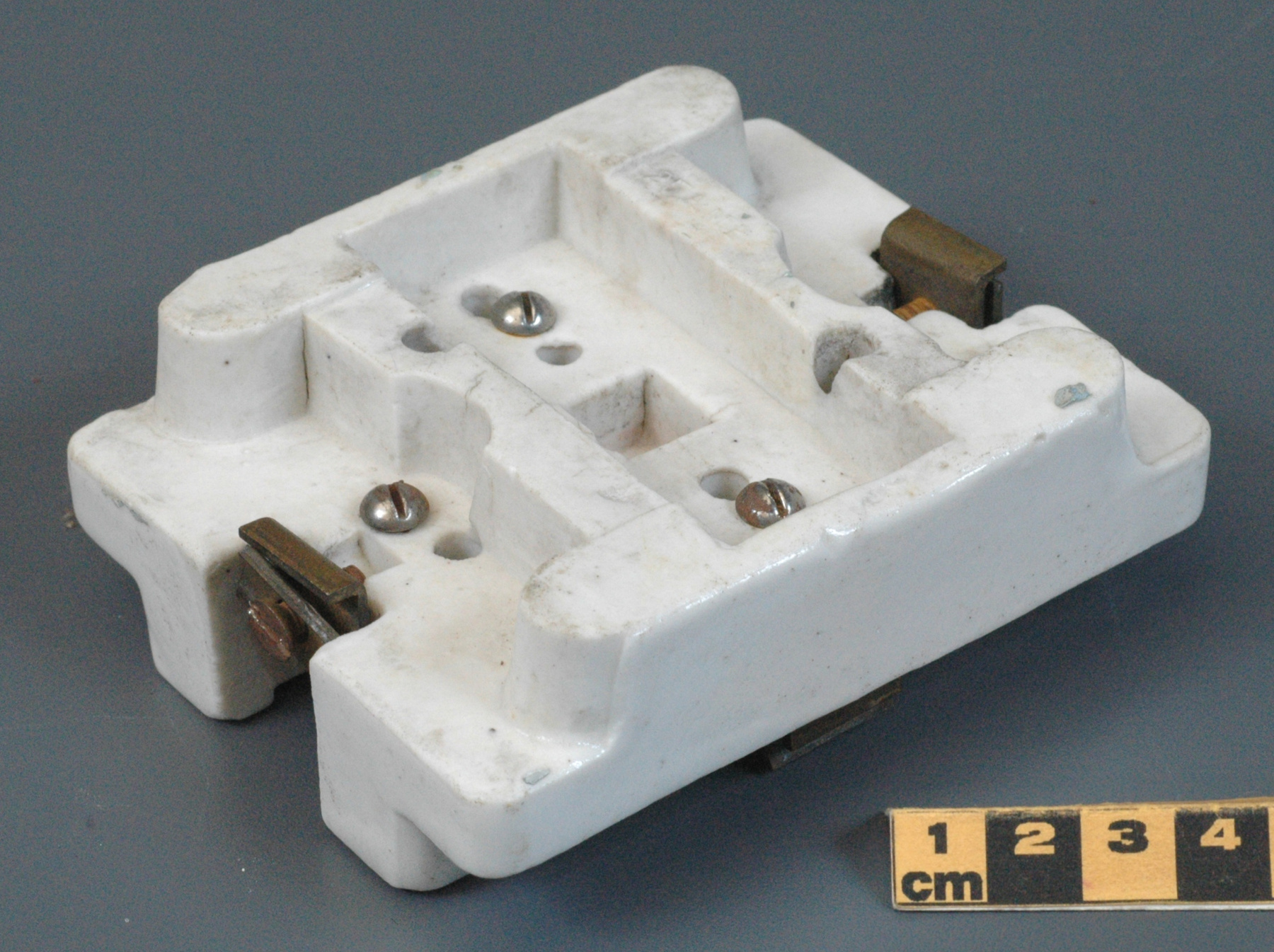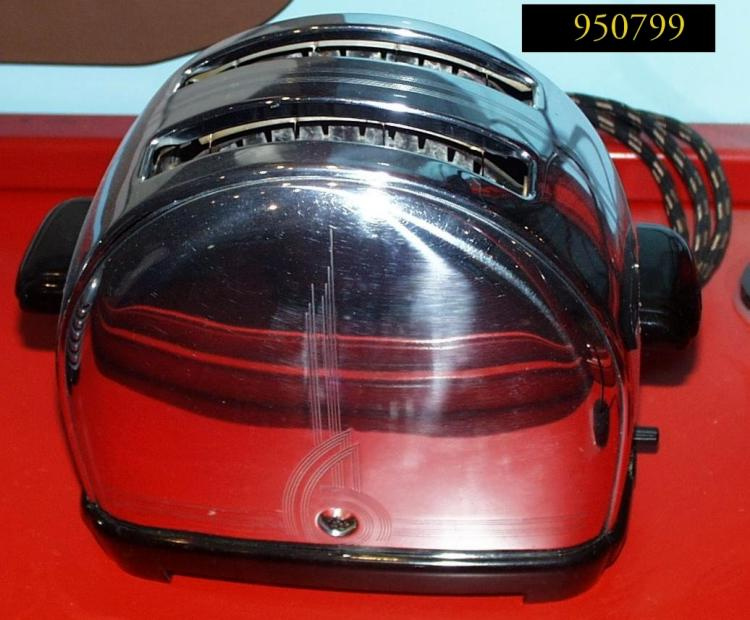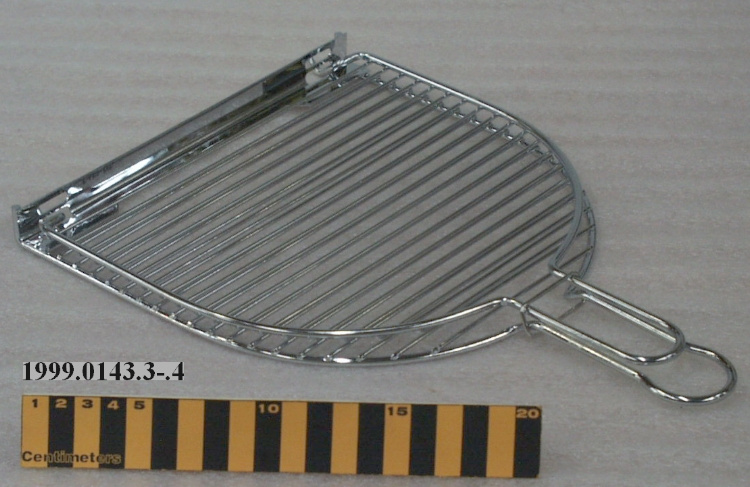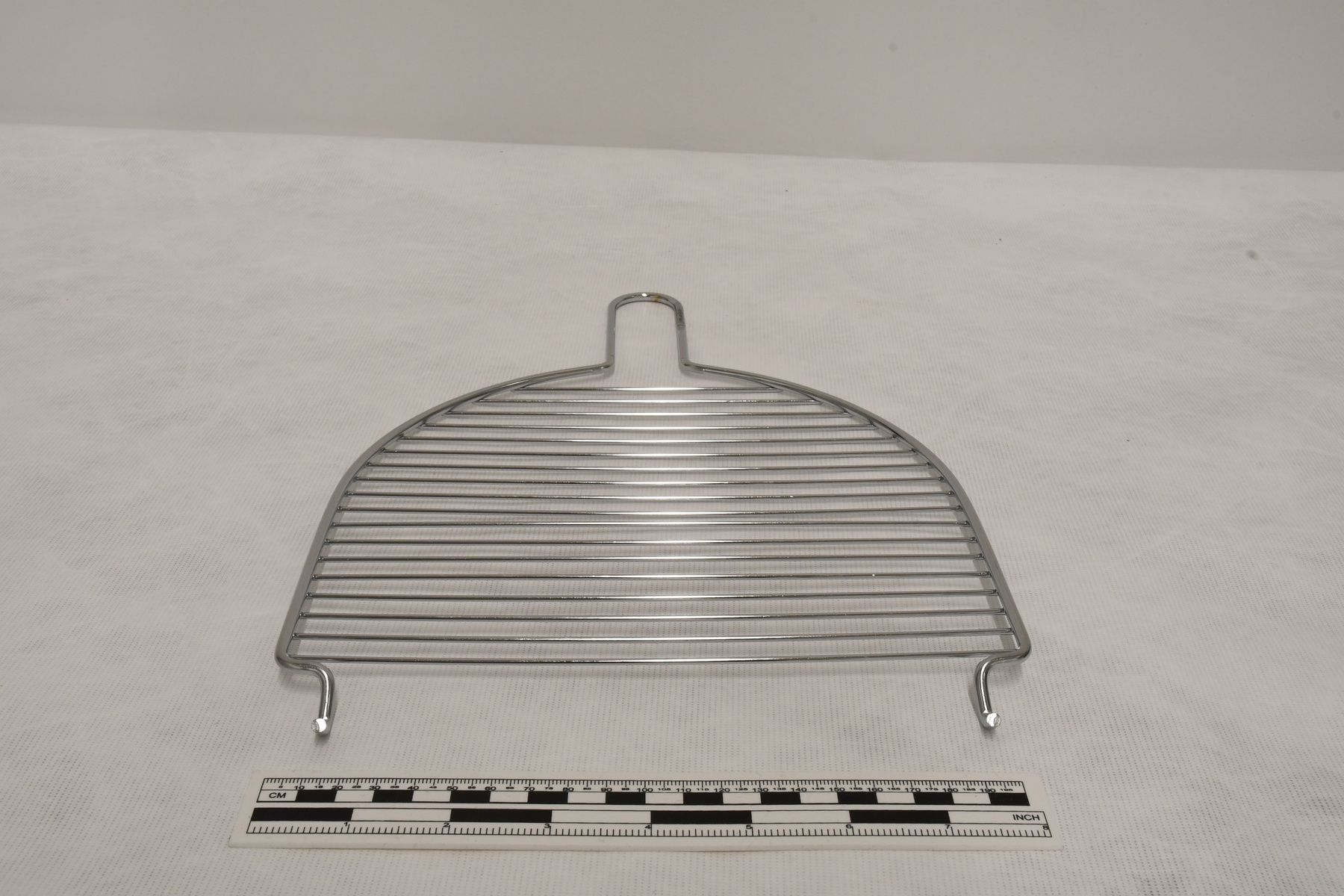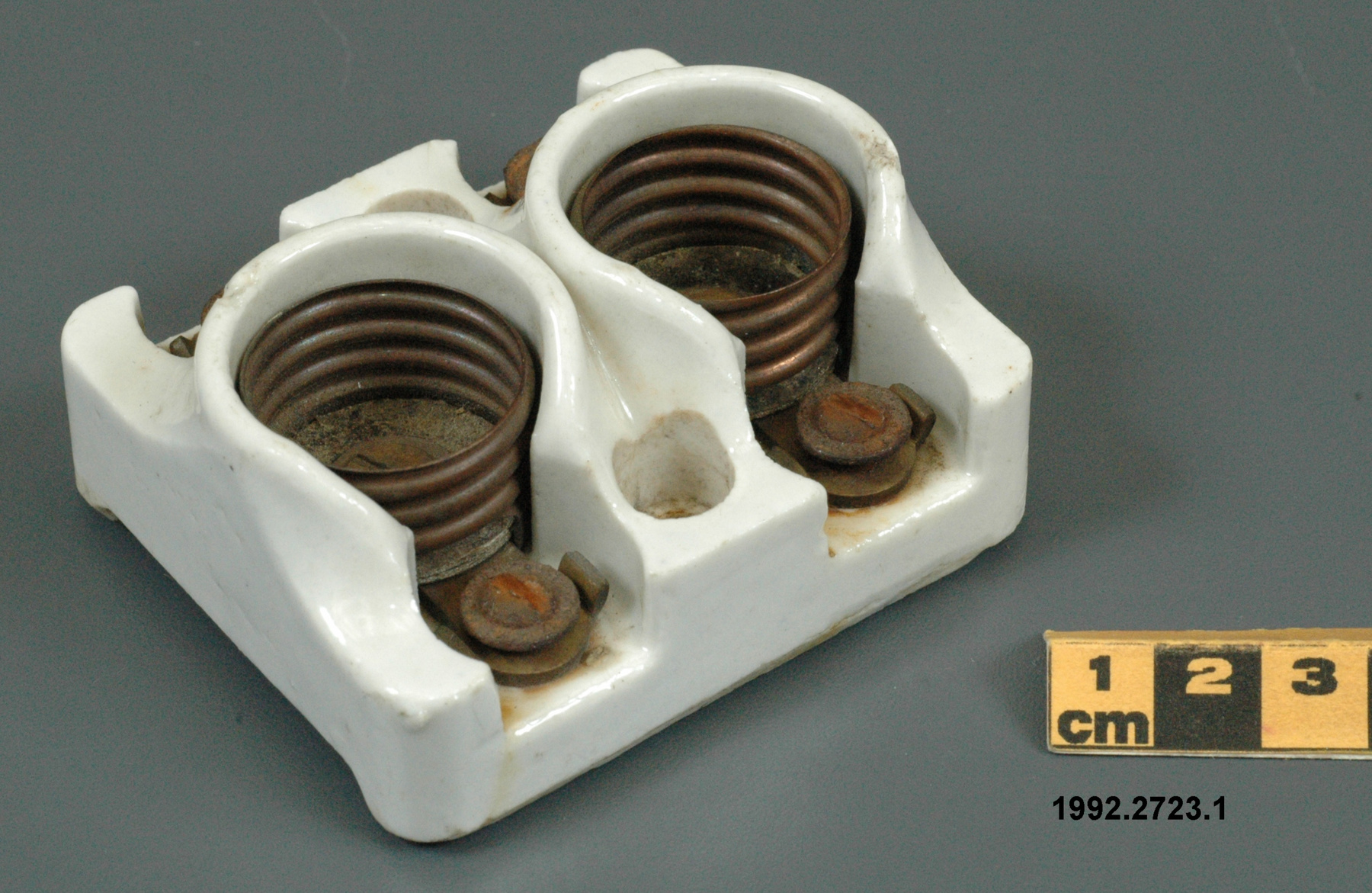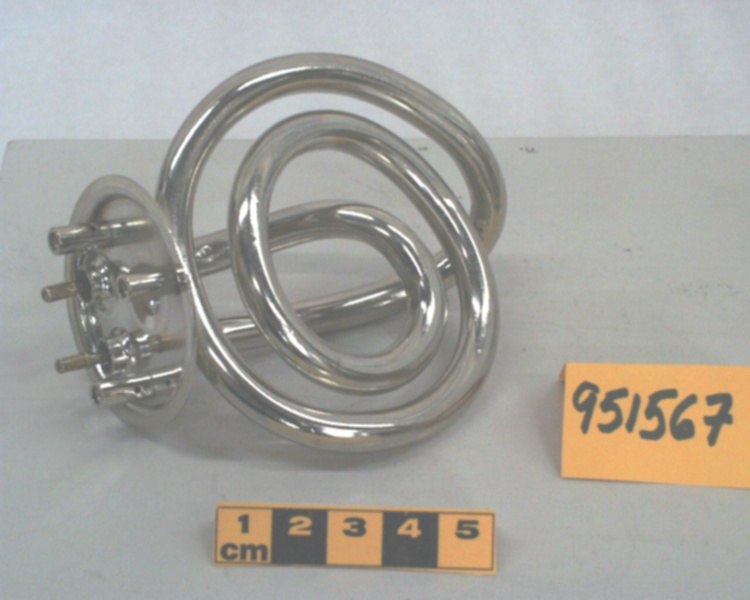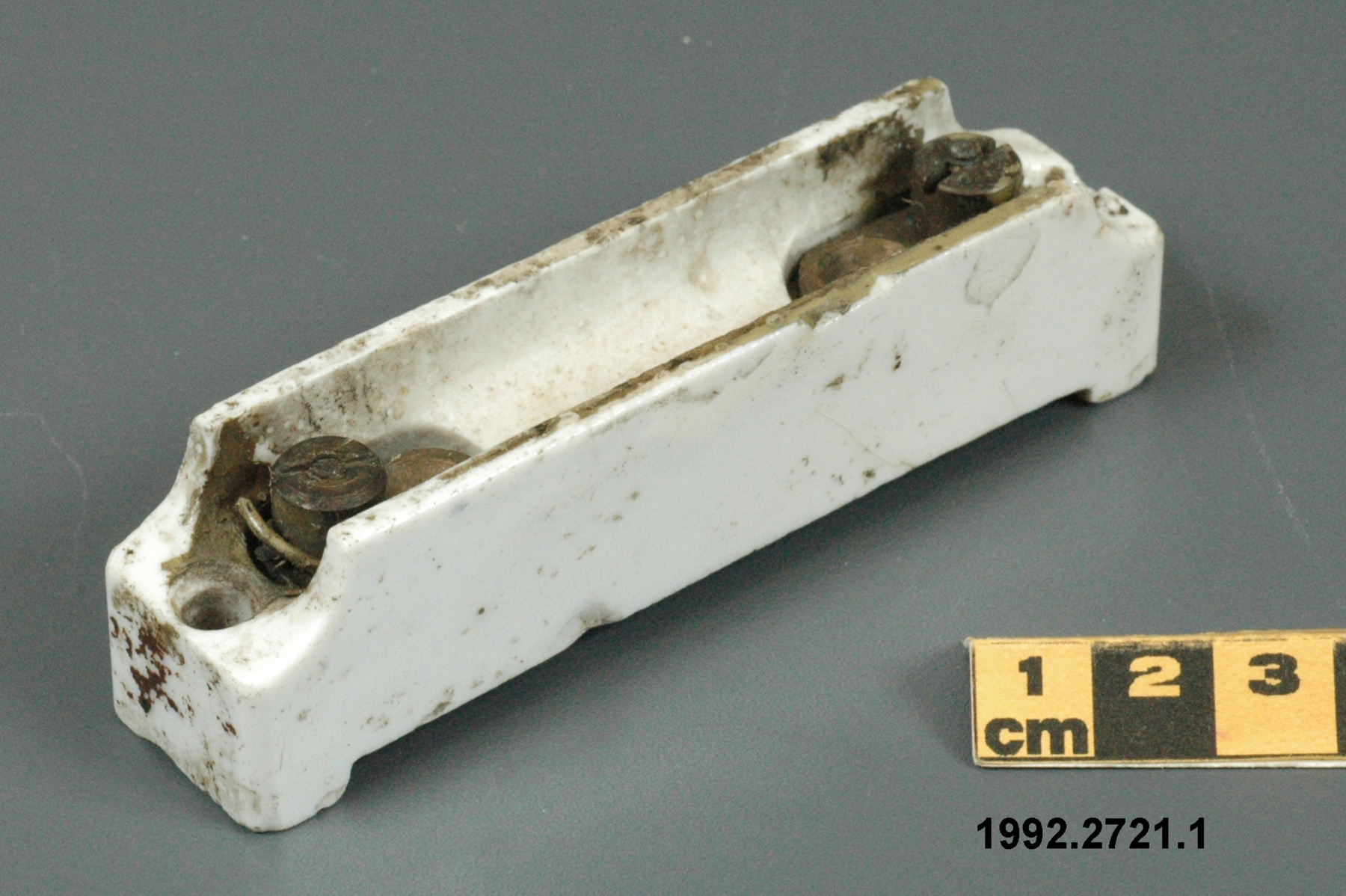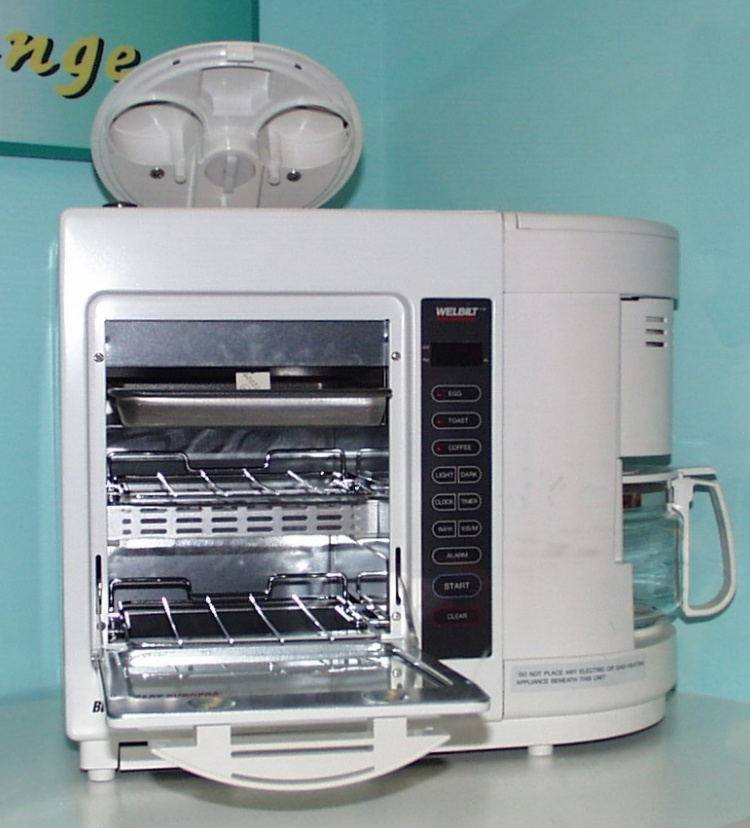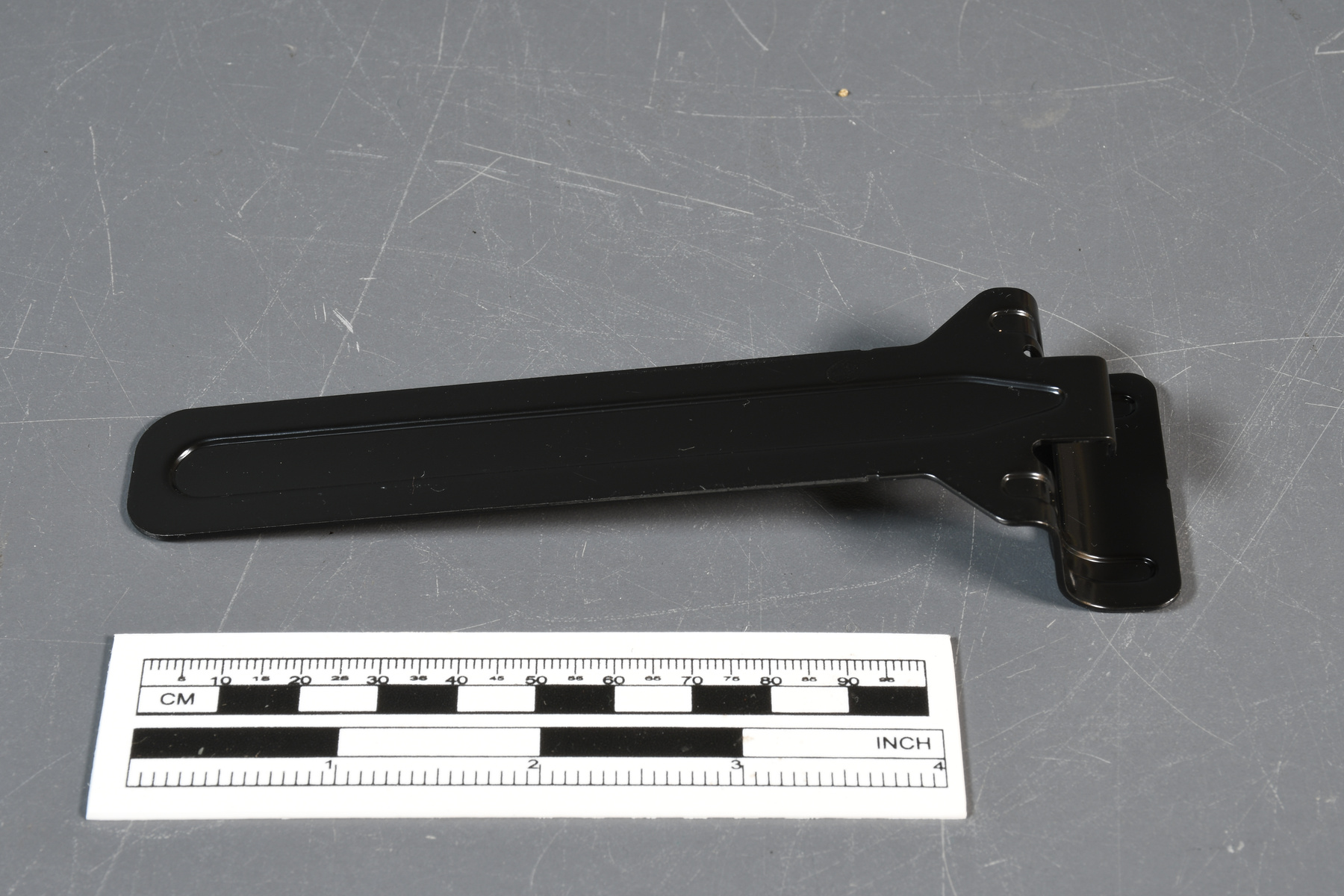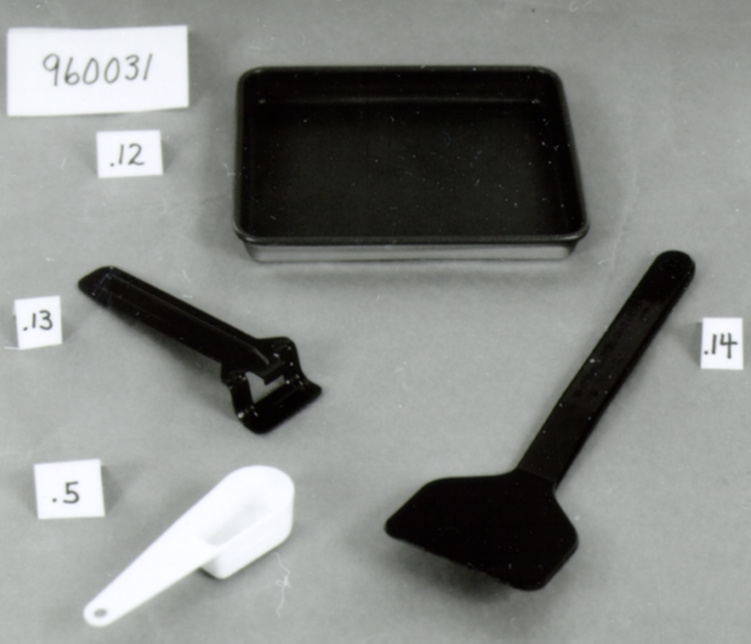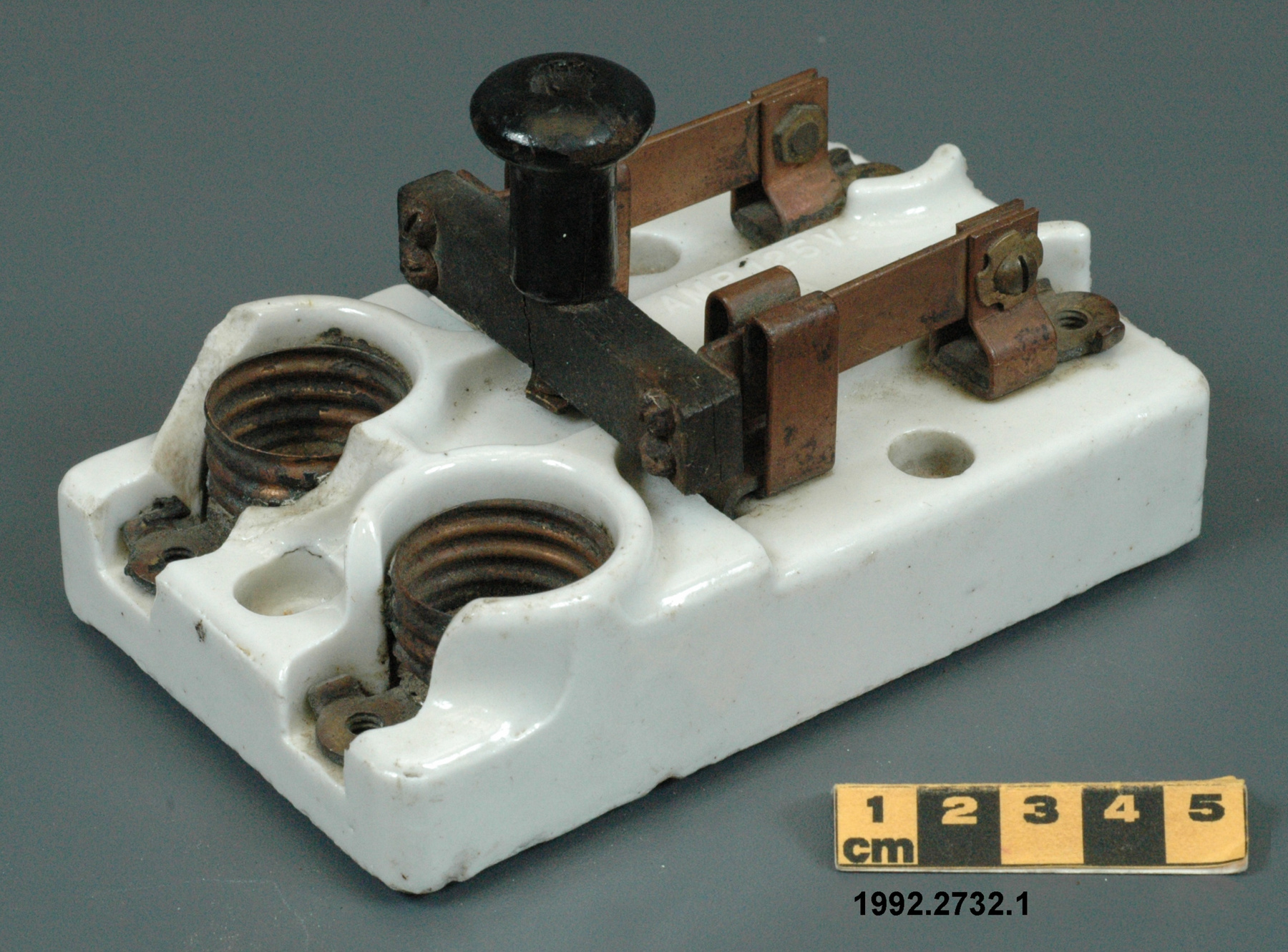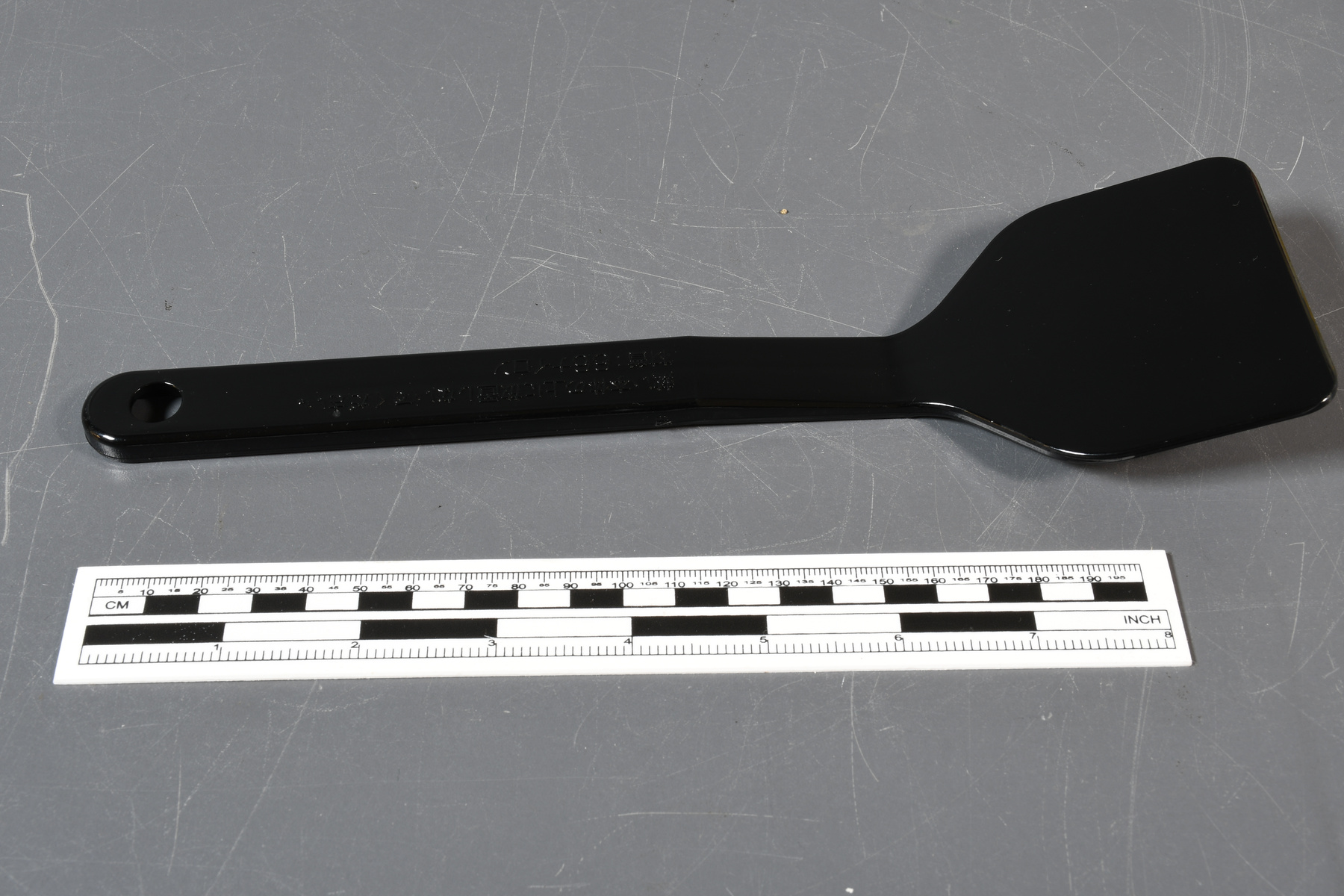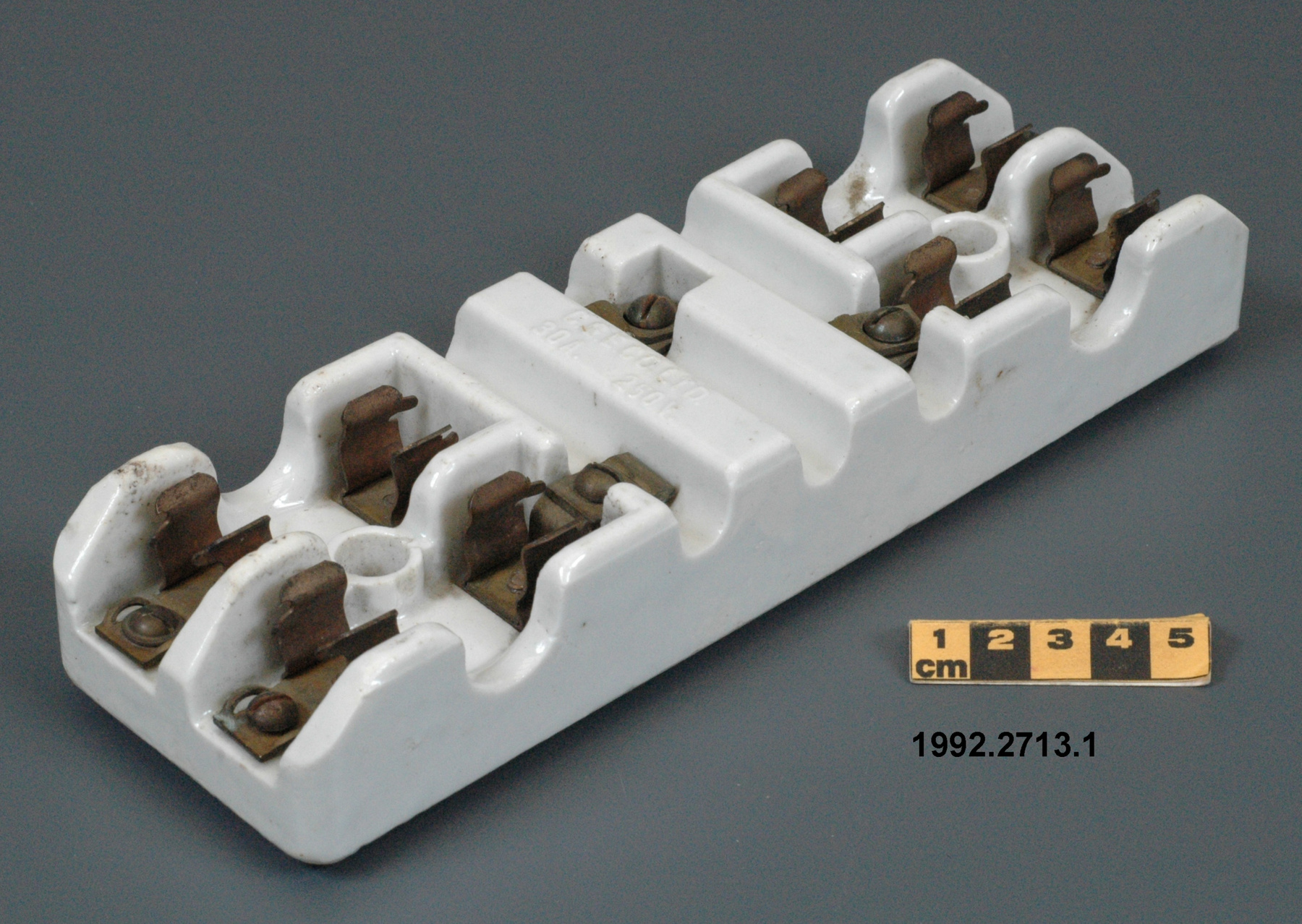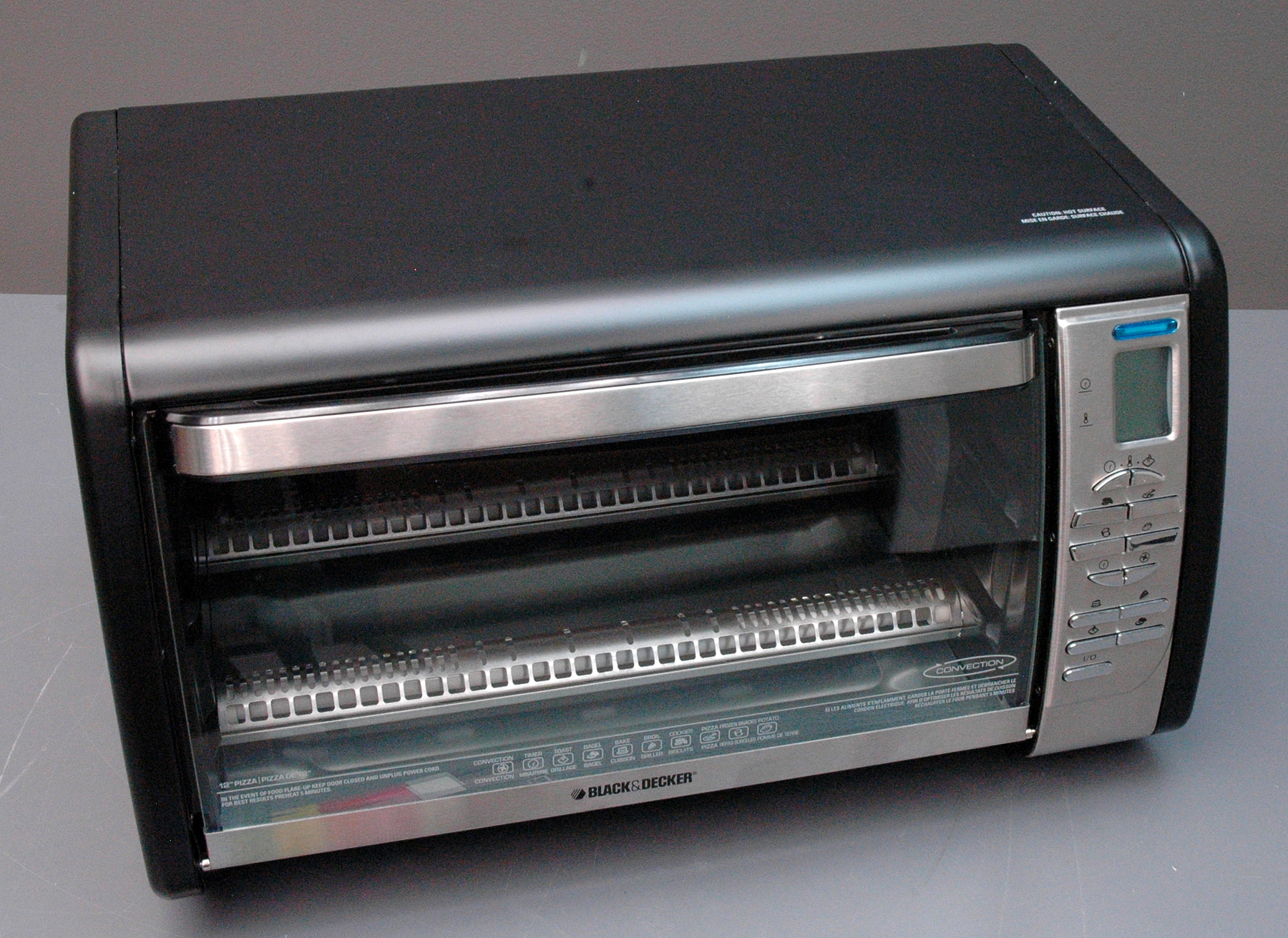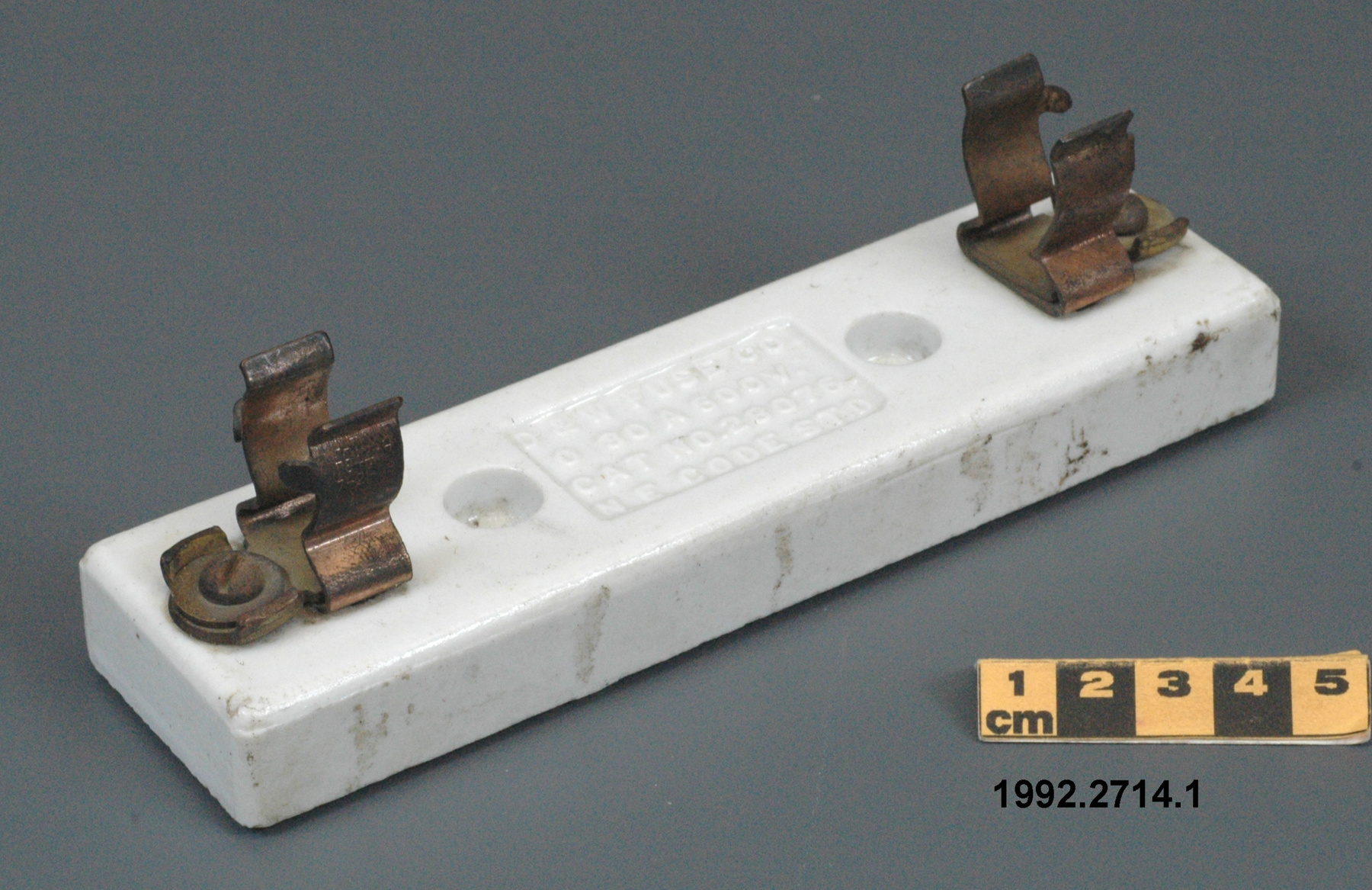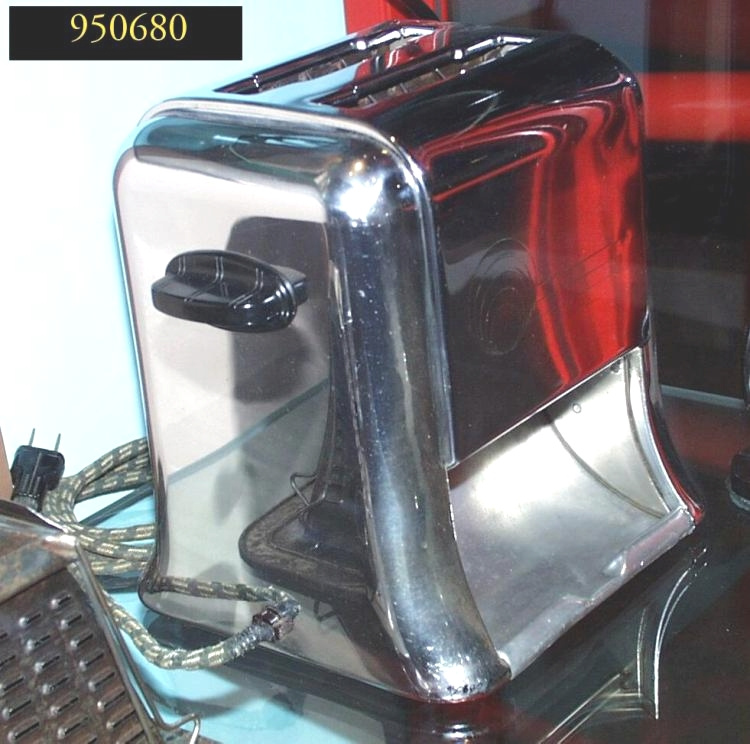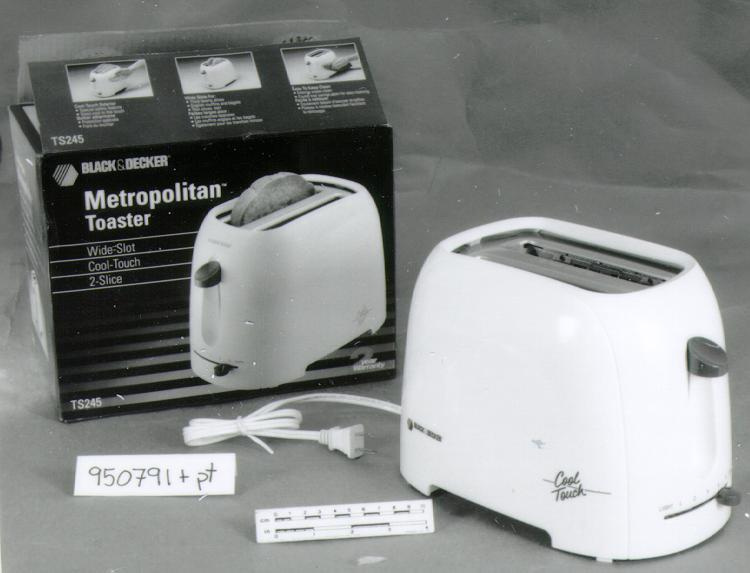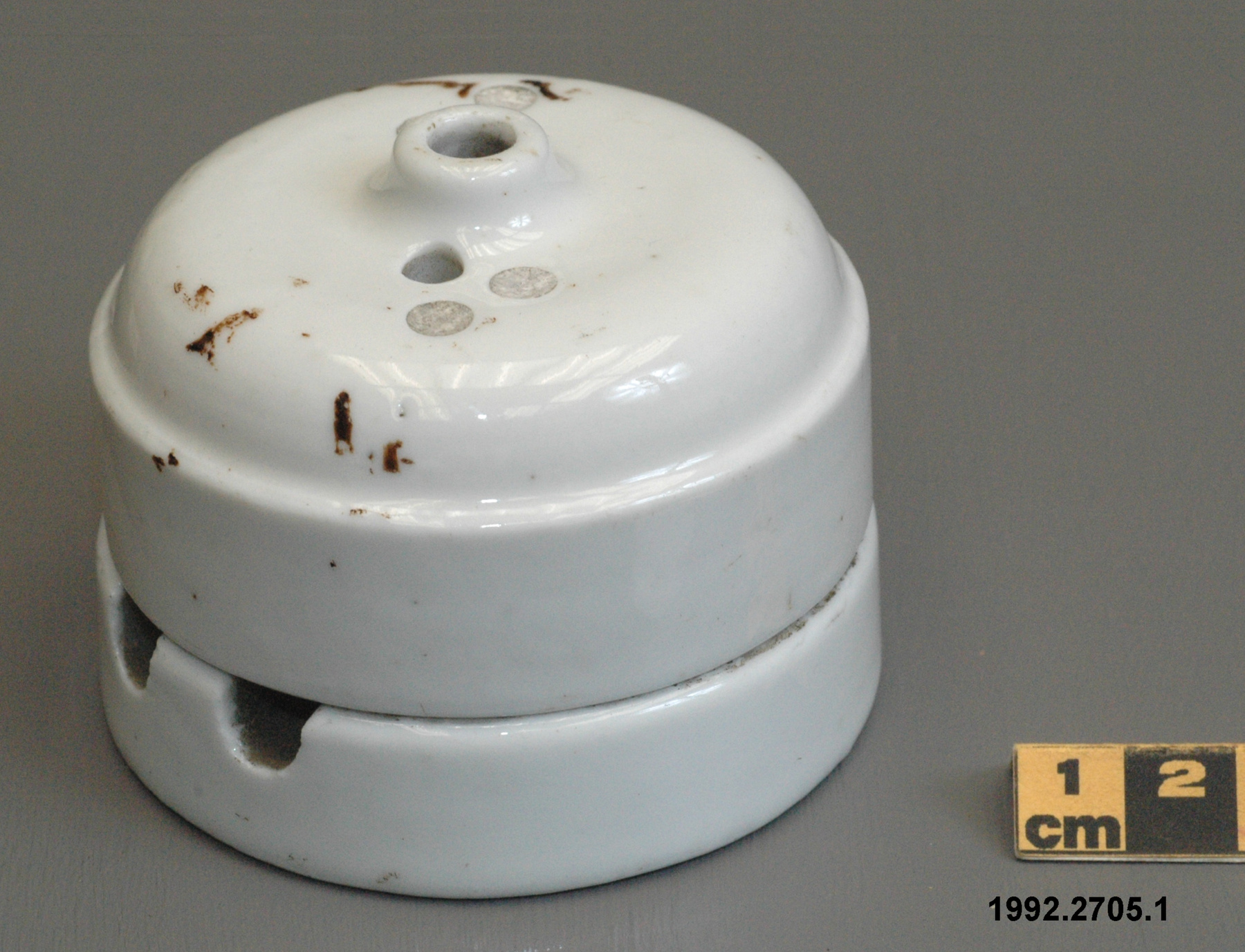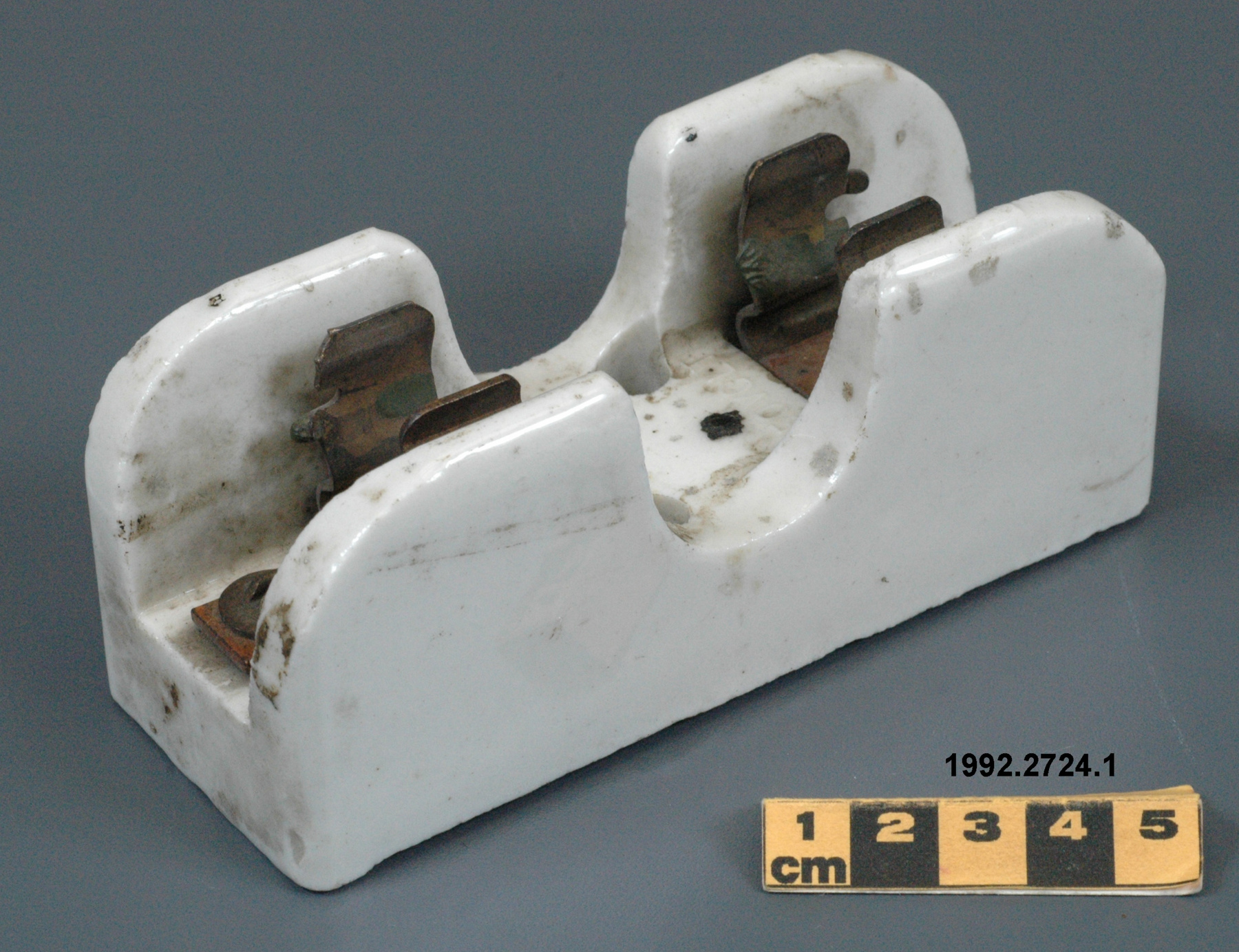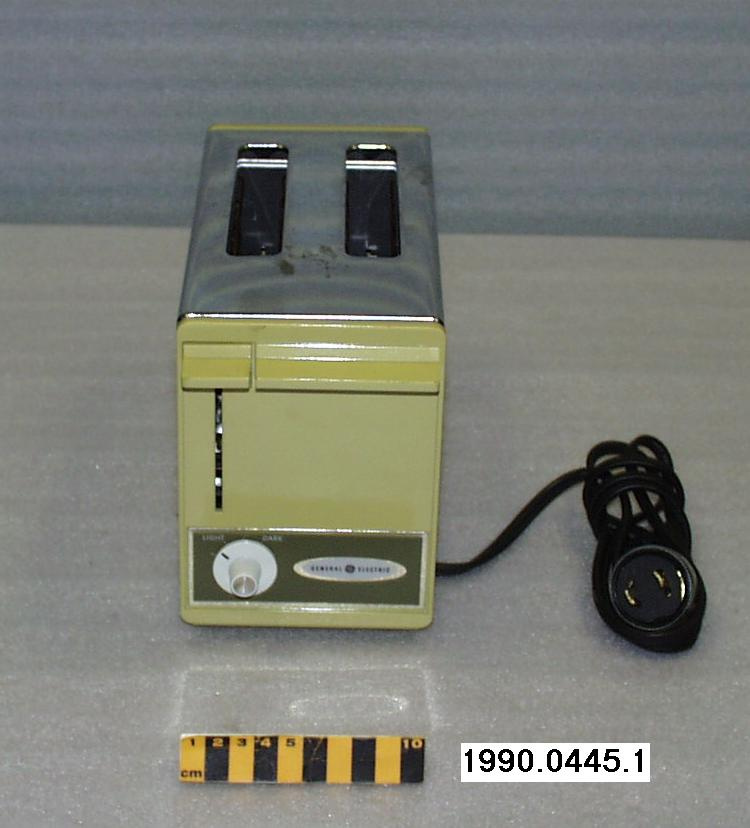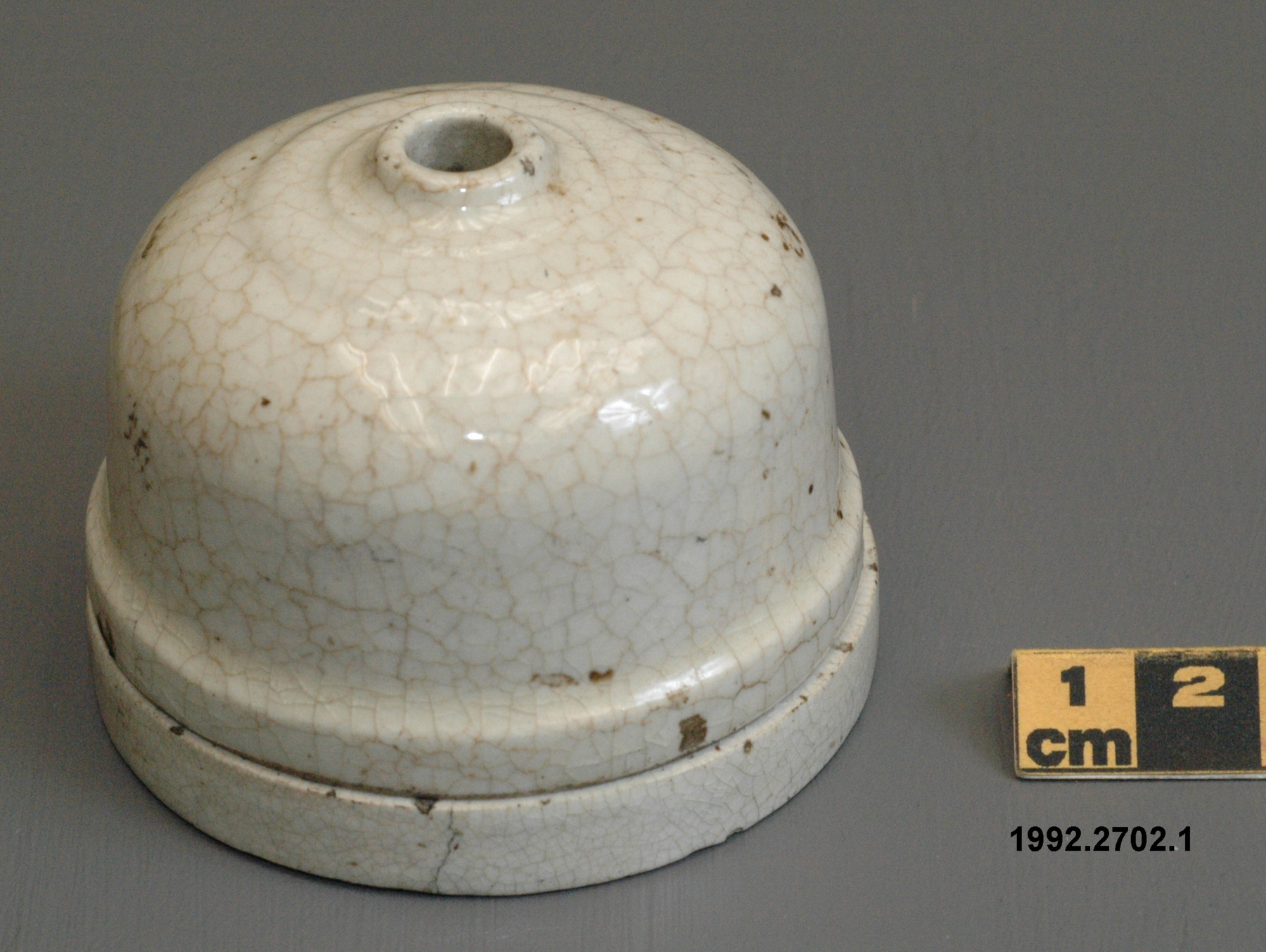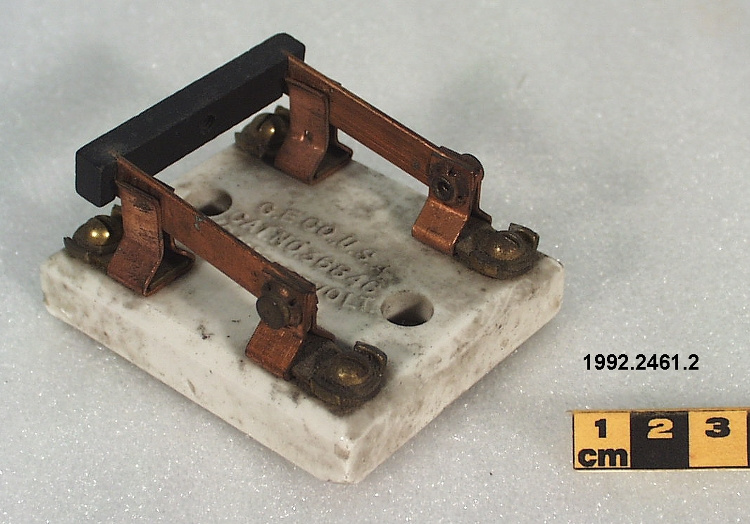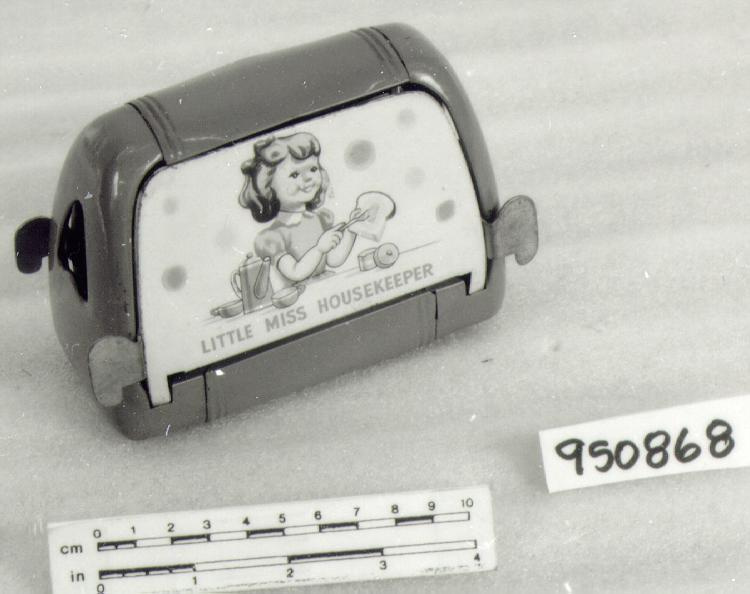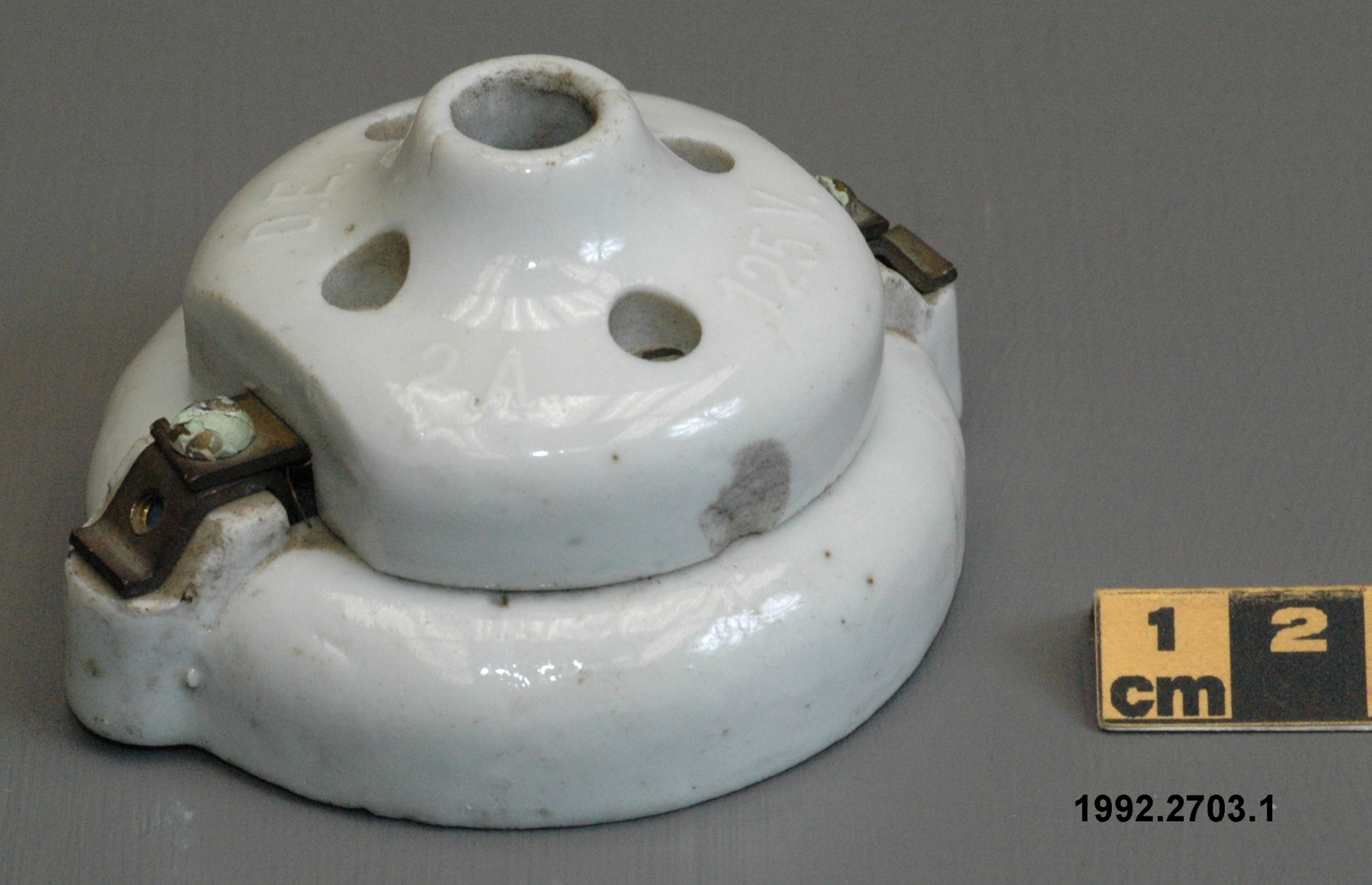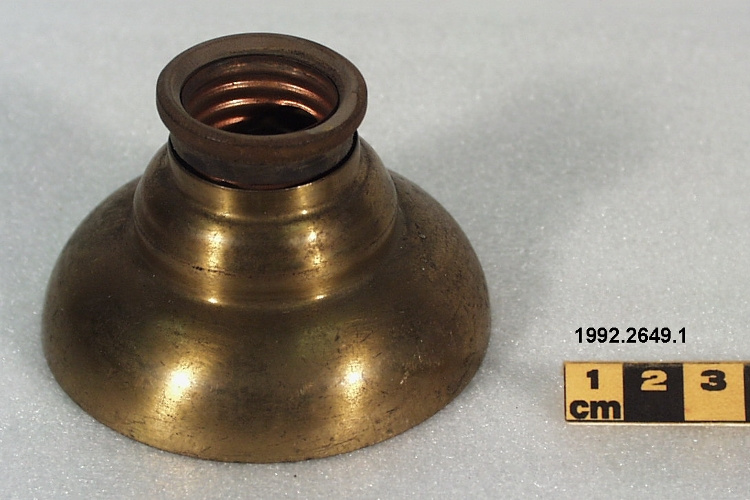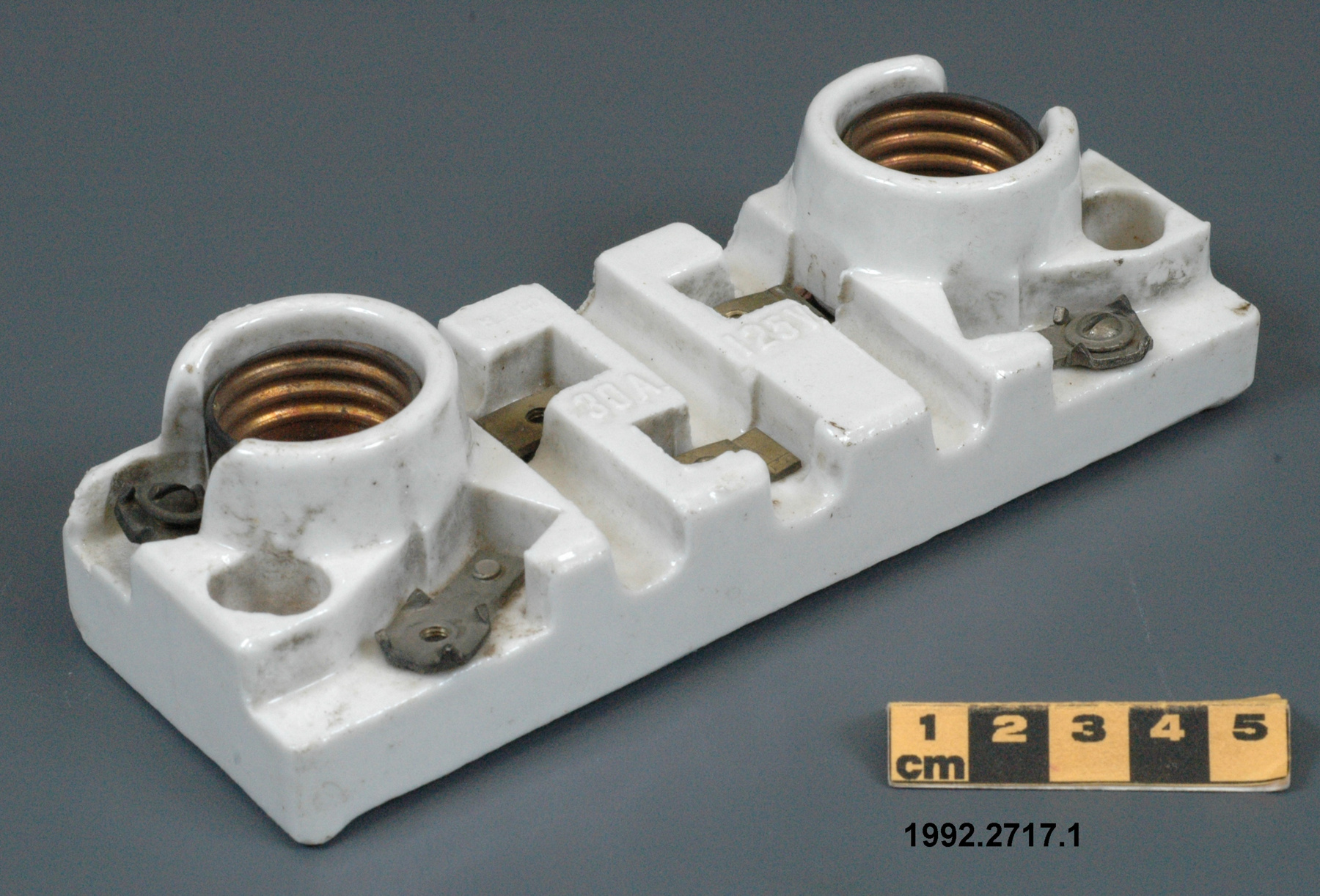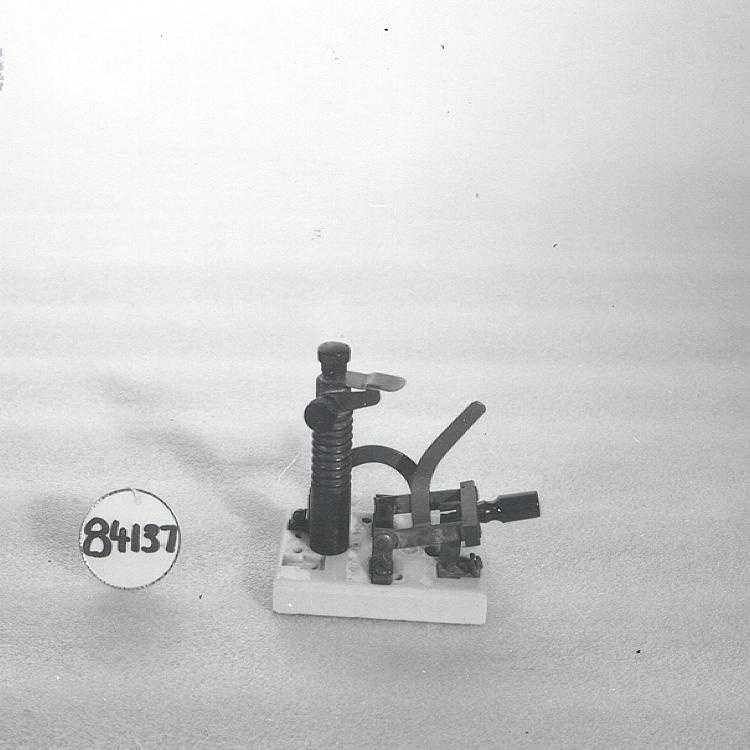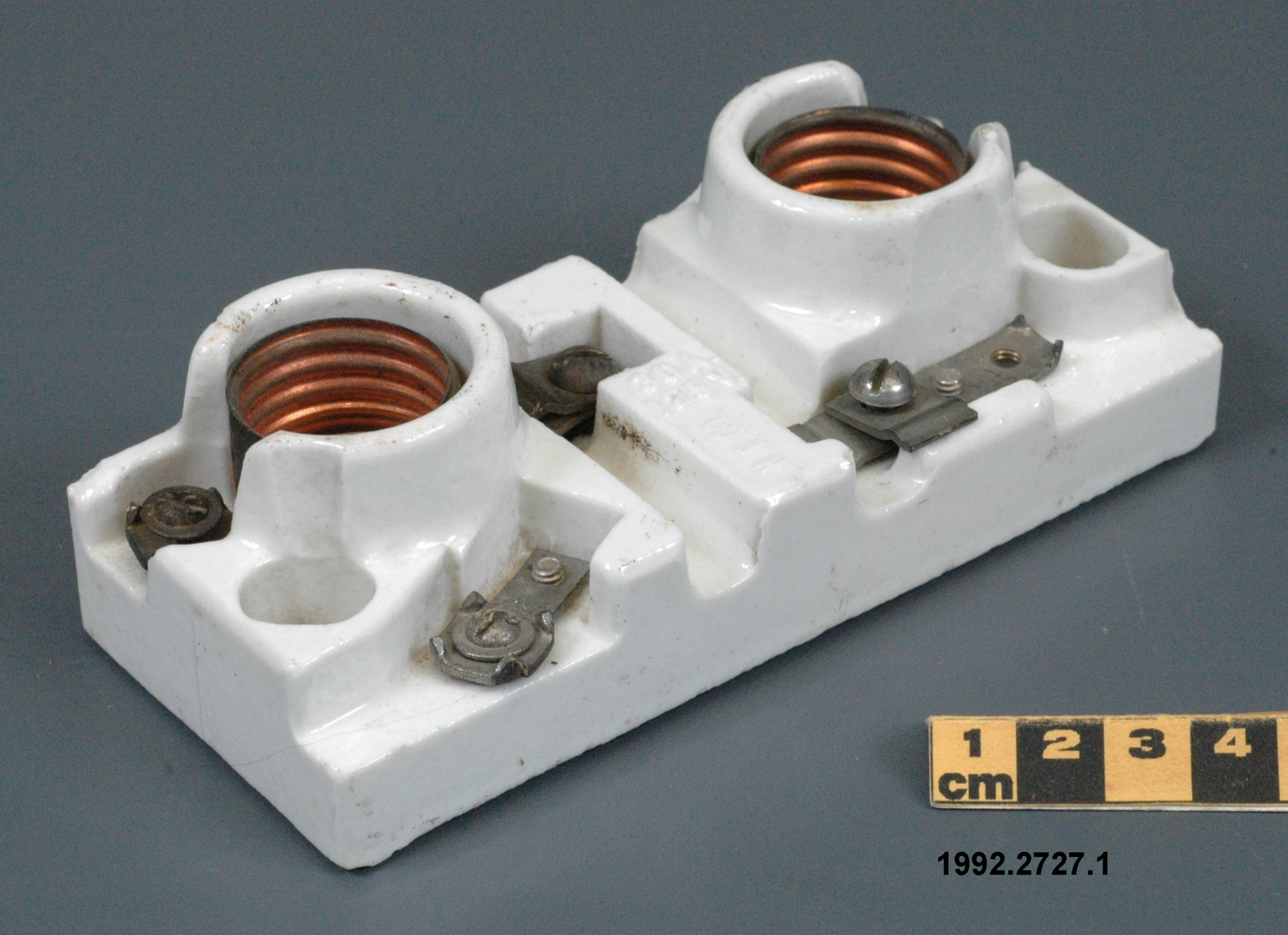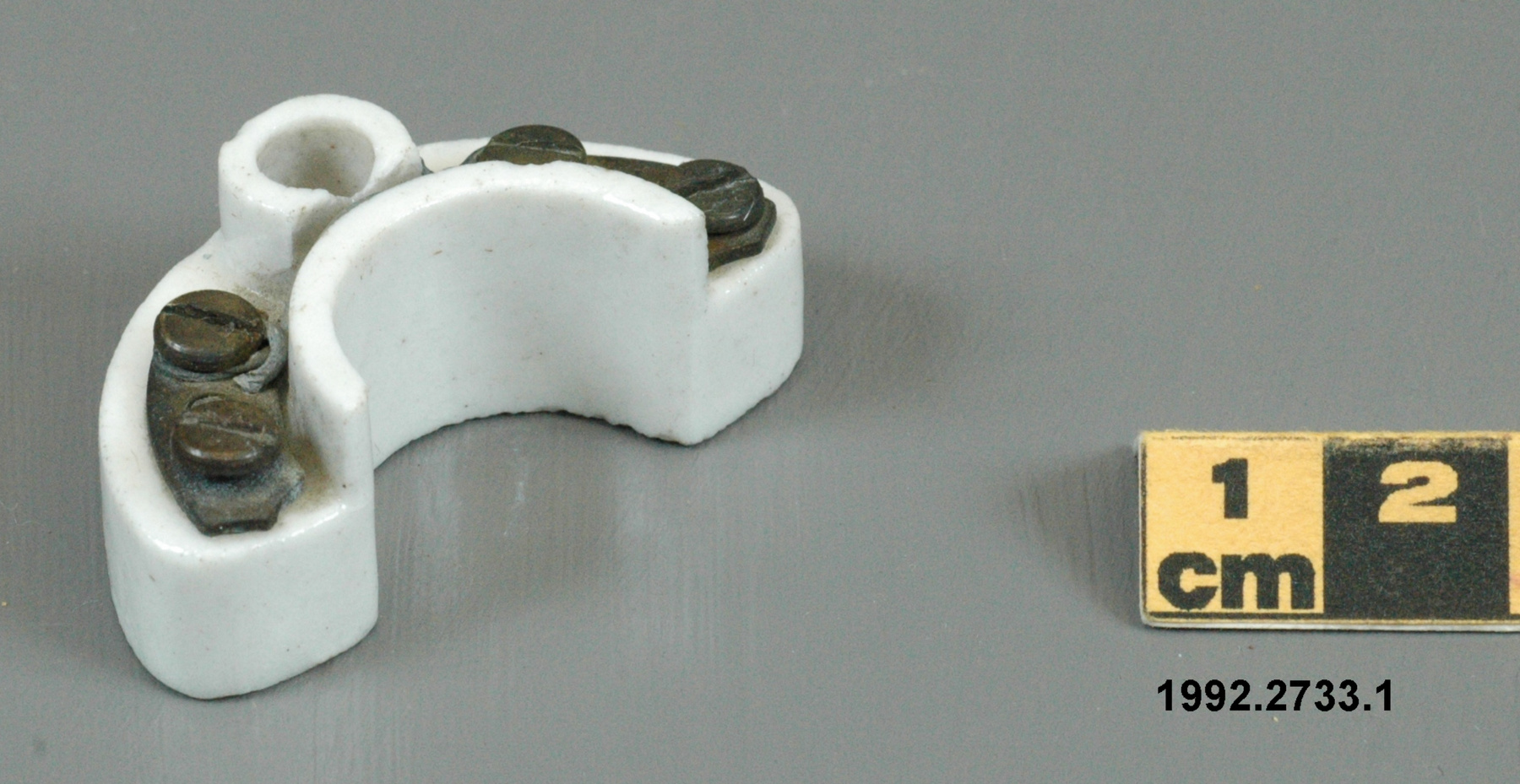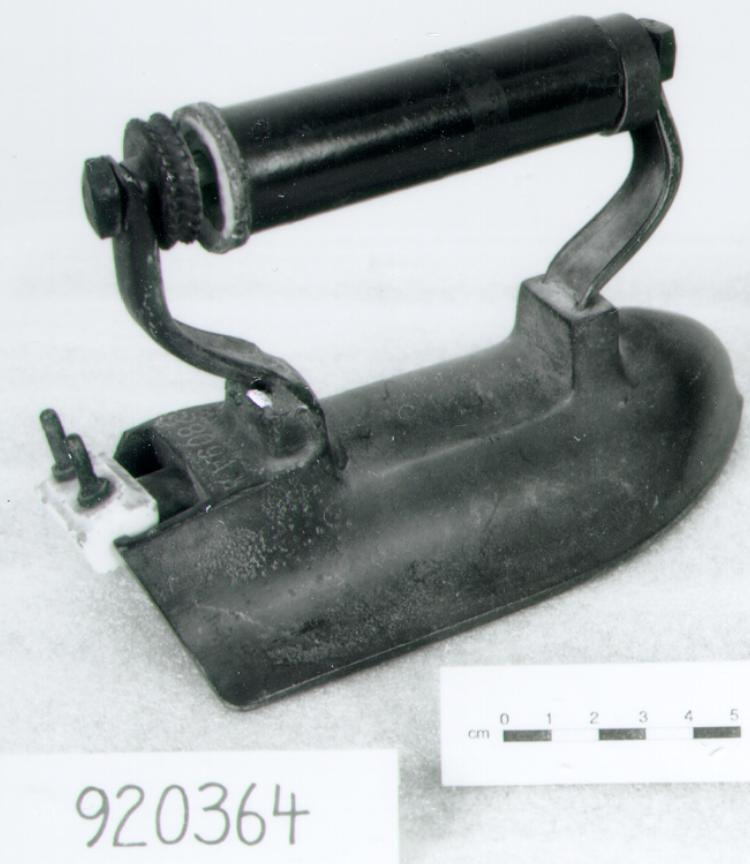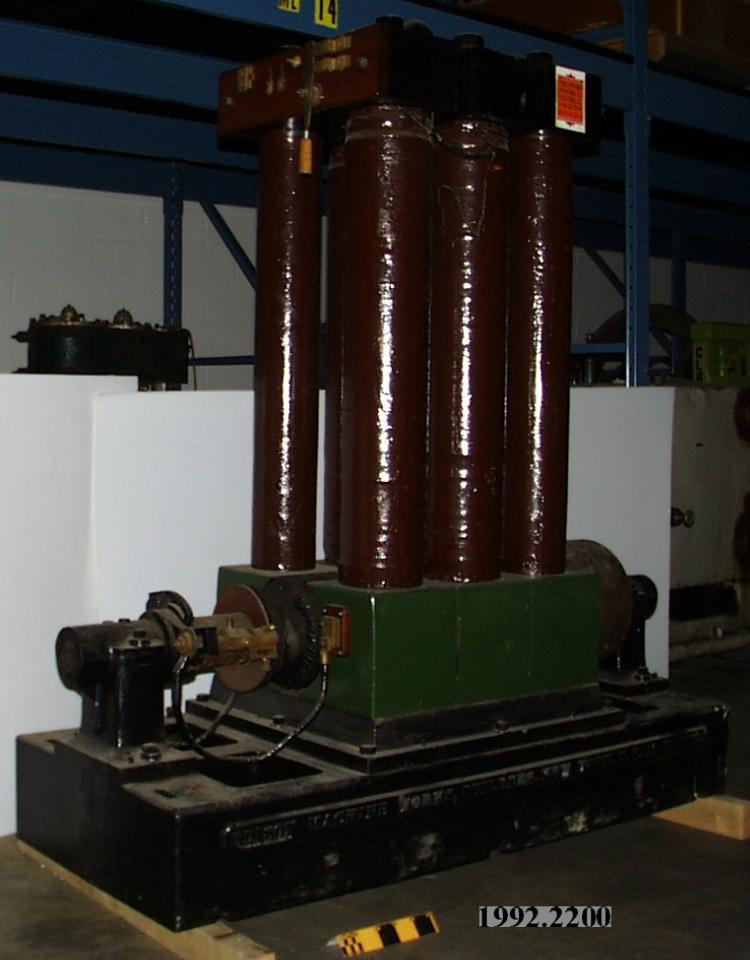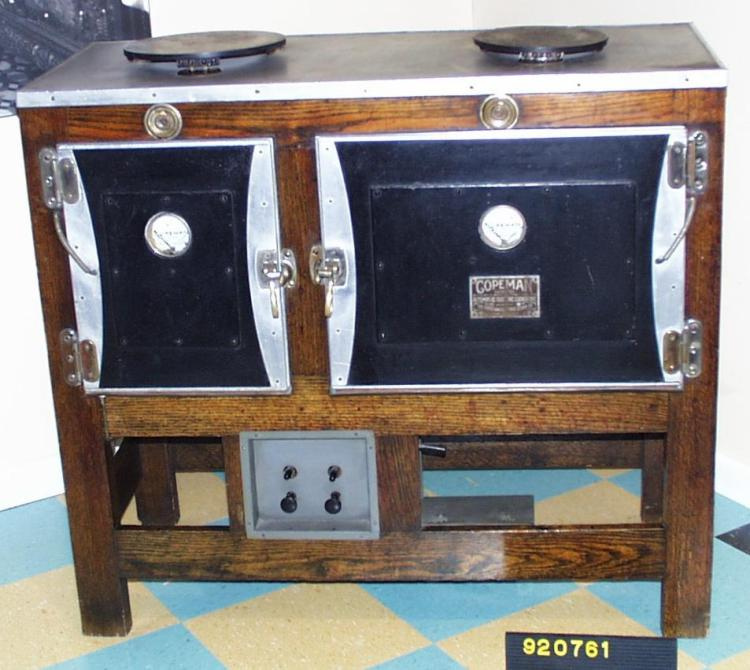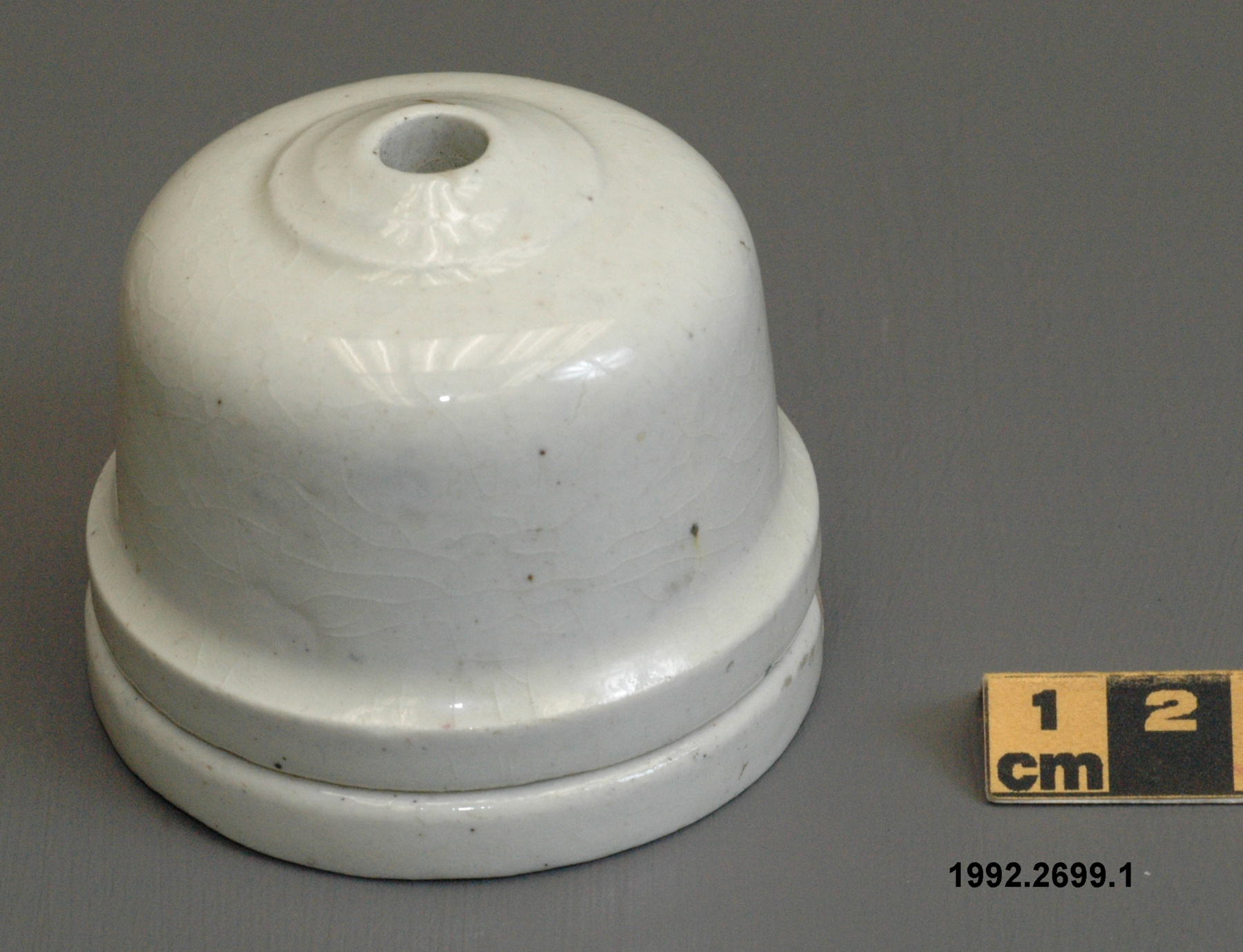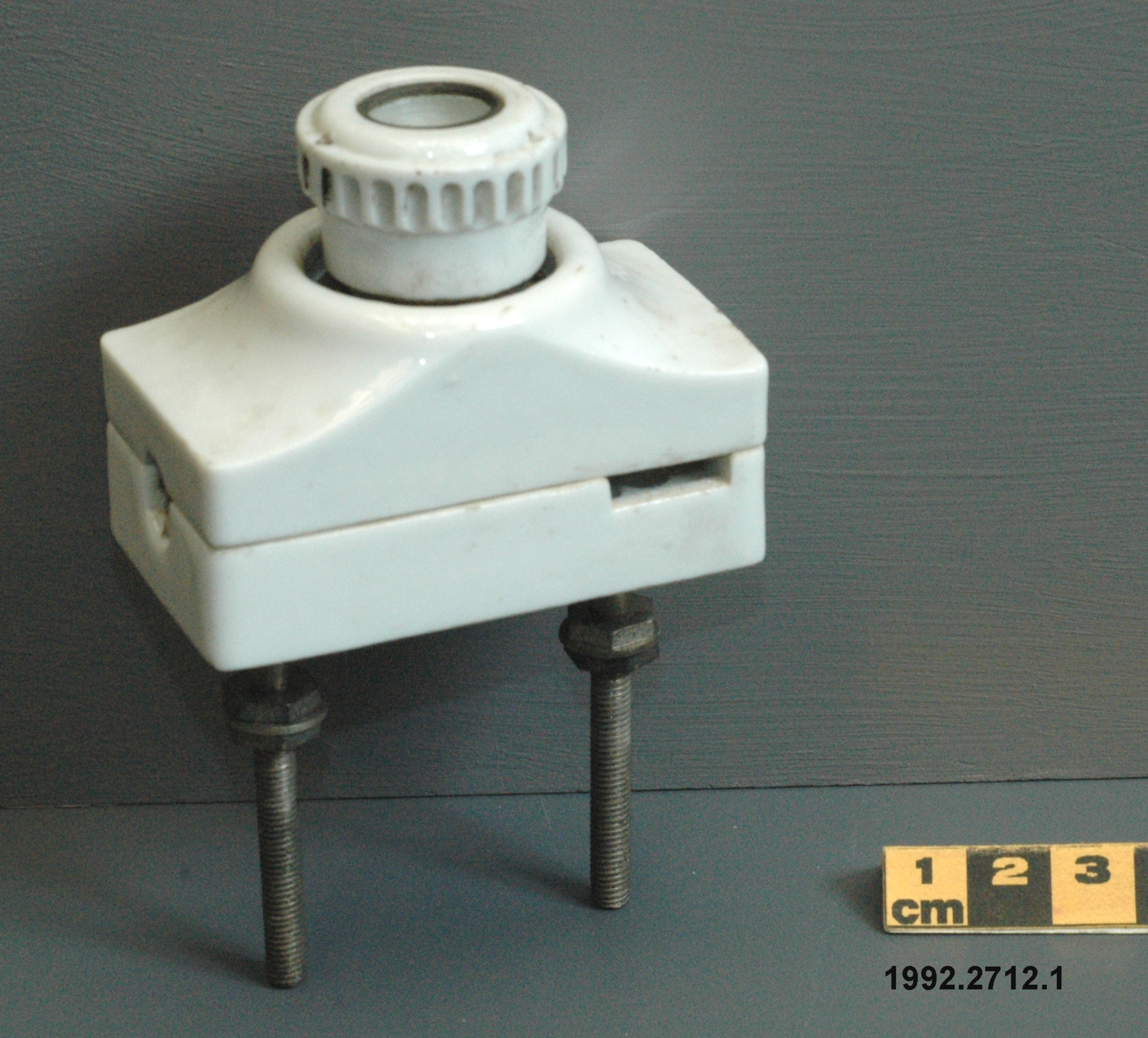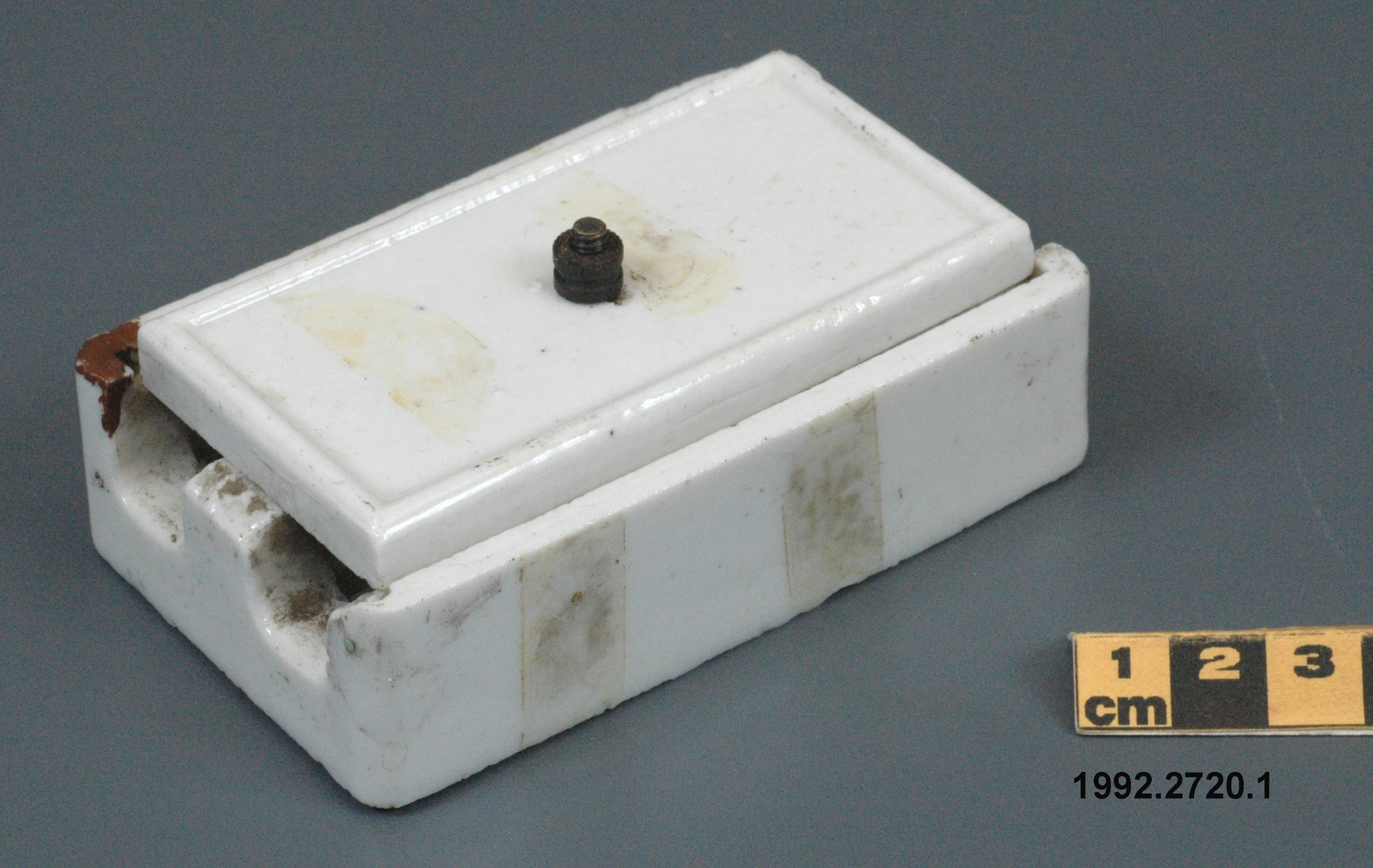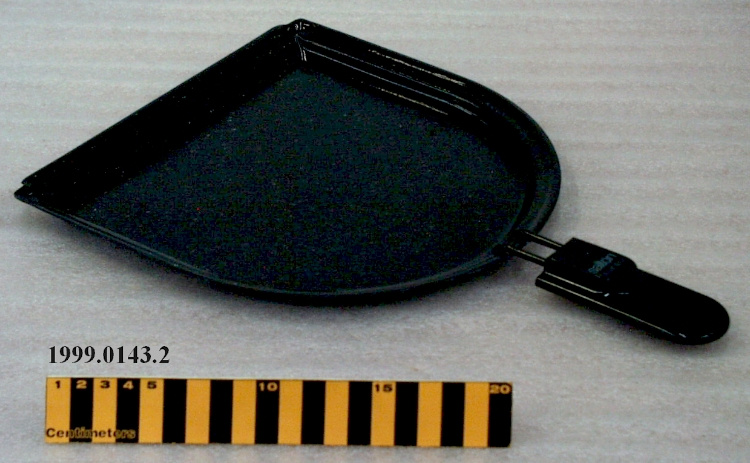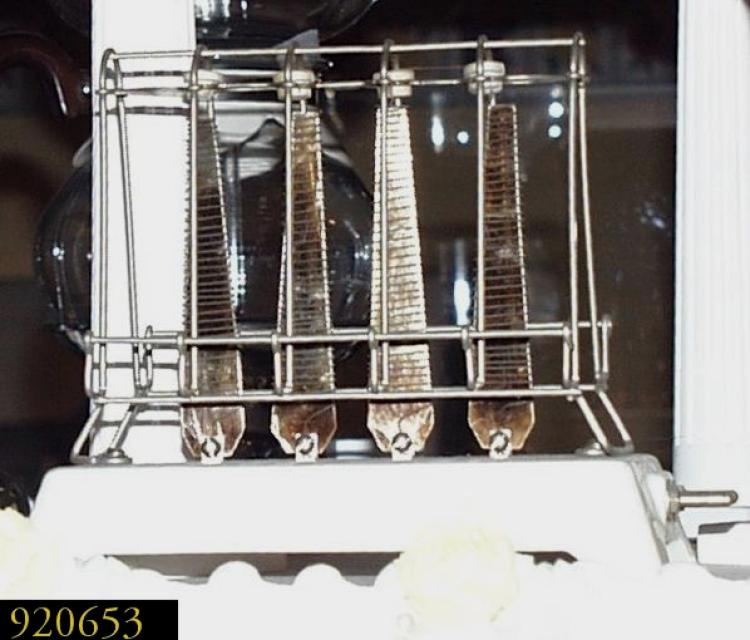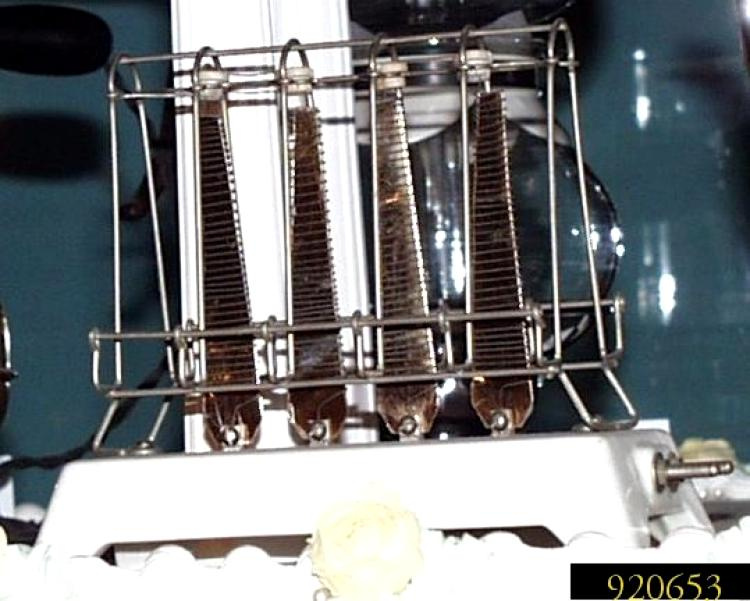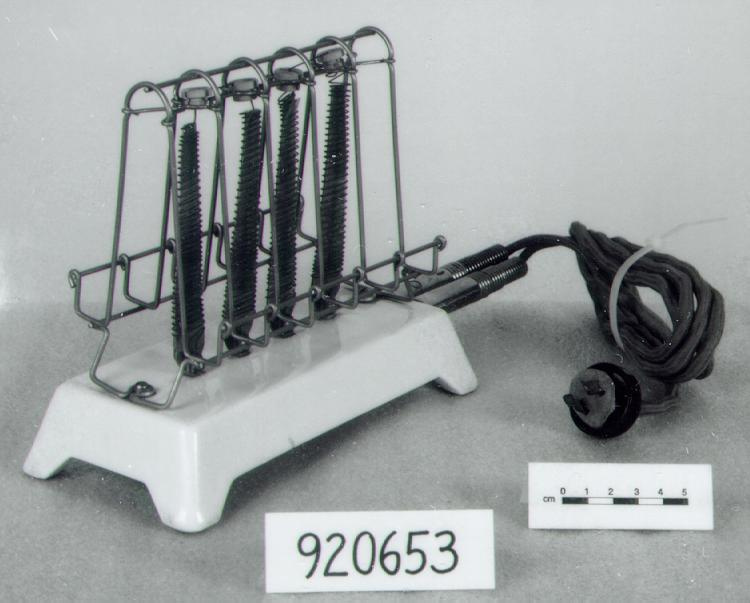Toaster
Use this image
Can I reuse this image without permission? Yes
Object images on the Ingenium Collection’s portal have the following Creative Commons license:
Copyright Ingenium / CC BY-NC-ND (Attribution-NonCommercial 4.0 International (CC BY-NC 4.0)
ATTRIBUTE THIS IMAGE
Ingenium,
1992.0653.001
Permalink:
Ingenium is releasing this image under the Creative Commons licensing framework, and encourages downloading and reuse for non-commercial purposes. Please acknowledge Ingenium and cite the artifact number.
DOWNLOAD IMAGEPURCHASE THIS IMAGE
This image is free for non-commercial use.
For commercial use, please consult our Reproduction Fees and contact us to purchase the image.
- OBJECT TYPE
- ELECTRIC/OPEN
- DATE
- 1911
- ARTIFACT NUMBER
- 1992.0653.001
- MANUFACTURER
- General Electric Co.
- MODEL
- D-12
- LOCATION
- United States of America
More Information
General Information
- Serial #
- N/A
- Part Number
- 1
- Total Parts
- 2
- AKA
- N/A
- Patents
- N/A
- General Description
- .1 PORCELAIN BASE/ METAL WIRE ELEMENTS WRAPPED AROUND SHEET MICA CORES/ CERAMIC? ELEMENT SUPPORTS/ NICKEL PLATED METAL WIRE BREAD RACK/ NICKEL PLATED METAL CONNECTING POLES/
Dimensions
Note: These reflect the general size for storage and are not necessarily representative of the object's true dimensions.
- Length
- 22.2 cm
- Width
- 10.3 cm
- Height
- 17.3 cm
- Thickness
- N/A
- Weight
- N/A
- Diameter
- N/A
- Volume
- N/A
Lexicon
- Group
- Domestic Technology
- Category
- Food processing
- Sub-Category
- N/A
Manufacturer
- AKA
- General Electric
- Country
- United States of America
- State/Province
- Unknown
- City
- Unknown
Context
- Country
- Unknown
- State/Province
- Unknown
- Period
- Unknown
- Canada
-
At the time of release of the D-12 toaster, electricity was not yet commonly found within Canadian homes. Toasters and other electrical appliances were typically used in commercial settings, such as restaurants. Electrification of homes started initially through the introduction of lighting, leading to the development of some toaster cords that plugged into lightbulb sockets (Ref.1). In 1917, the two-prong system for electrical plugs was established and standardized across North America (Ref.1), and by the 1920s it became more affordable to bring electricity into the home. Between 1941-1951, the percentage of homes with electricity increased significantly, from 69.1% of homes, to 87.8%, with higher percentages in urban regions of the country (Ref. 2). To encourage further use of electricity in homes during low-peak hours, electric companies in Canada began to encourage use of electrical appliances. These companies targeted women in their marketing, promoting the benefits of appliances to reduce workload in the kitchen. Showrooms were set up across Canada by various electric manufacturers, inviting women to view various electrical appliances (Ref.1). As Canadians were introduced to the benefits of electricity in the kitchen, there was initially higher uptake of small electric appliances, such as toasters and irons, than the larger appliances. Between 1952-1960, the total number of toasters that were manufactured in Canada increased from 198,200 to 278,567 toasters total, or a total value of $1.2 million to $2.6 million (Ref.3). By 1931, 40% of homes across Canada owned a toaster (Ref.2). - Function
-
To toast bread on one side, other side is toasted by turning the bread manually. Can toast up to two slices of bread at a time. - Technical
-
The D-12 Toaster was the first commercially available toaster, invented by Frank Shailor and produced by General Electric (Ref.4). Prior to the invention of toasters, toast was typically made by being held over a fire or gas stove. The toaster uses Nichrome, a filament made of nickel and chromium, invented by Albert Marsh in 1905. This innovative material allowed for a heated element that could continue to be reheated after multiple uses, and was quickly adopted for use in many small electrical appliances (Ref. 5). The design is simple, with a porcelain base that housed the wiring and secured the other components. General Electric provided decorated and undecorated models of the D-12. Nichrome is wrapped around mica sheets to create a heating element for the toast, an approach that is used in the design of toaster components to this day. The toaster requires that the user attends to the appliance and turns the toast by hand to ensure even toasting on both sides. Due to human error however, this often led to burnt toast. This design flaw eventually led to the development of the pop-up toaster in 1919 (Ref.4). - Area Notes
-
Unknown
Details
- Markings
- RAISED LETTERS ON UNDERSIDE OF CERAMIC BASE READ: 'PAT/ DEC. 28- 1909' & 'G.E.CO. U.S.A./ TYPE D-12/ A'
- Missing
- ELECTRICAL CORD From CA of 03/16/1994 by Tony Missio: No - Complete
- Finish
- BASE WHITE PORCELAIN; BREAD RACK & CONNECTING POLES METAL WITH PLATED NICKEL FINISH
- Decoration
- N/A
CITE THIS OBJECT
If you choose to share our information about this collection object, please cite:
General Electric Co., Toaster, circa 1911, Artifact no. 1992.0653, Ingenium – Canada’s Museums of Science and Innovation, http://collection.ingeniumcanada.org/en/item/1992.0653.001/
FEEDBACK
Submit a question or comment about this artifact.
More Like This
